

Programs & Initiatives

Digester Egg Tours

Tour Dates & Registration
We host tours of the Digester Eggs at the Newtown Creek Wastewater Resource Recovery Facility three times a year: in February, April, and October. These tours are free to the public—ages 12 and above; however, advance registration is required. We hope to see you there!
These popular tours fill up quickly, so please mark your calendar so that you don't miss out on this opportunity!
We host tours of the Digester Eggs at the Newtown Creek Wastewater Resource Recovery Facility three times a year: in February, April, and October. The October tour, which is hosted by Open House NY (OHNY) during their OHNY Weekend, will take place on Saturday, October 12, 2020.
Tour times will be at 11am, 1pm, and 3pm. Tours are free to the public—ages 12 and above; however, advance registration is required because space is limited. Registration for the October tour will begin on October 8 at 11am on the OHNY website .
We host tours of the Digester Eggs at the Newtown Creek Wastewater Resource Recovery Facility three times a year: in February, April, and October. The Valentine’s tour will take place on Saturday, February 8, 2020 in celebration of Valentine’s Day. Registration will open during the last week of January.
Tours are free to the public— ages 12 and above —however, advance registration is required.
What to Expect
The Digester Egg Tour starts with an overview of the wastewater treatment process—an essential part of protecting public health and New York City’s waterways. After, we treat guests to unobstructed views of the Manhattan, Brooklyn and Queens skylines from the observation deck, a glass-enclosed walkway built atop our state-of-the art digester eggs. Newtown Creek Digester Eggs . -->
The Digester Egg Tour starts at the Visitor Center at Newtown Creek, located in Brooklyn’s Greenpoint neighborhood. We are easy to spot—just look for the bright orange building. The entrance is near the intersection of Greenpoint Avenue and Humboldt Street at 329 Greenpoint Avenue Brooklyn, NY 11222 .
The Visitor’s Center at Newtown Creek: Special Note for School Groups
The Visitor Center at Newtown Creek offers education programs for pre-Kindergarten through 12 th grade students, undergraduate and graduate classes, and educators by appointment. Visit our Visitor Center at Newtown Creek webpage to learn more.
Frequently Asked Questions
How do I register?
We give public tours of the Digester Eggs three times a year: in February; April, and October. Registration opens for the February and April tours on our website approximately two weeks prior to the announced tour dates. All registration is on a first come first served basis. The October tour is hosted by Open House New York (OHNY). Information for this tour can be found on the OHNY website .
Are tours free?
All tours are free to the public, ages 12 and older.
How long is the tour?
The tour takes about an hour and a half. Doors open 30 minutes prior to the tour time.
Can I take photos or video during the tour?
Still photography is allowed, but taking video is prohibited.
What should I wear?
All attendees are required to wear closed-toe, flat-soled shoes. We reserve the right to deny participation in the tour if improper footwear is worn.
Can I get there via subway?
Take the G train to Greenpoint Ave and use the exit marked Greenpoint/Manhattan Ave. Walk east along Greenpoint Ave; McDonald’s will be on your left. Cross McGuinnes Blvd and continue on Greenpoint Ave one block past Provost St. You will see the bright orange two-story Visitor Center building ahead.
Will I need to sign a visitor release form?
Yes, all guests will be required to sign a visitor release form at the beginning of the tour. Children under the age of 18 must have a release form signed by a parent or guardian. Sorry, children under 12 are not allowed.

Queens Landing Boathouse hosts educational trips on Newtown Creek’s ecology
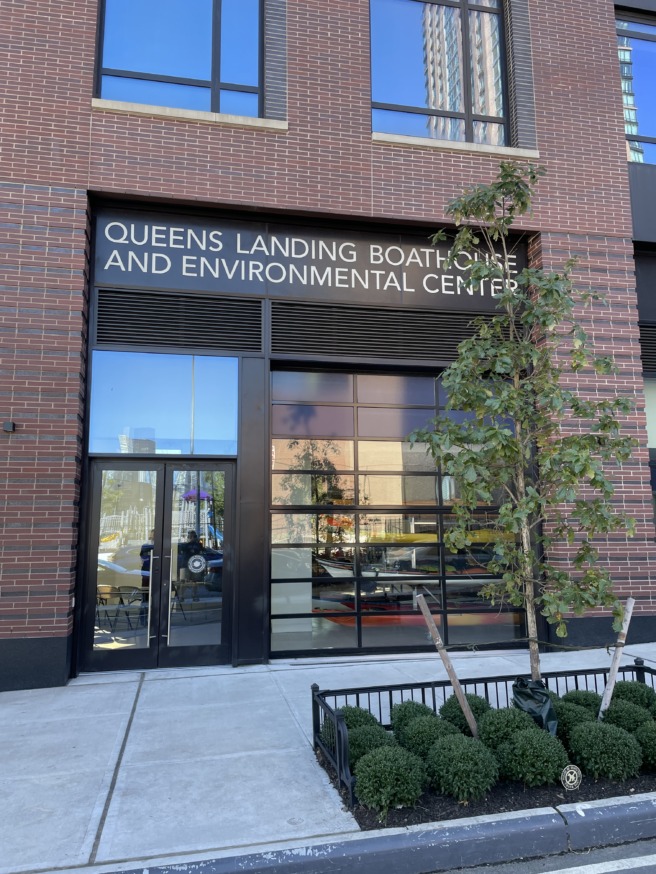
April 4, 2024 By Queens Post News Team
Hunter’s Point Parks Conservancy and the Newtown Creek Alliance are hosting educational field trips at the newly-opened Queens Landing Boathouse and Environmental Center , offering students and members of the local community an opportunity to learn about the history of Newtown Creek and the pollution issues facing the waterway.
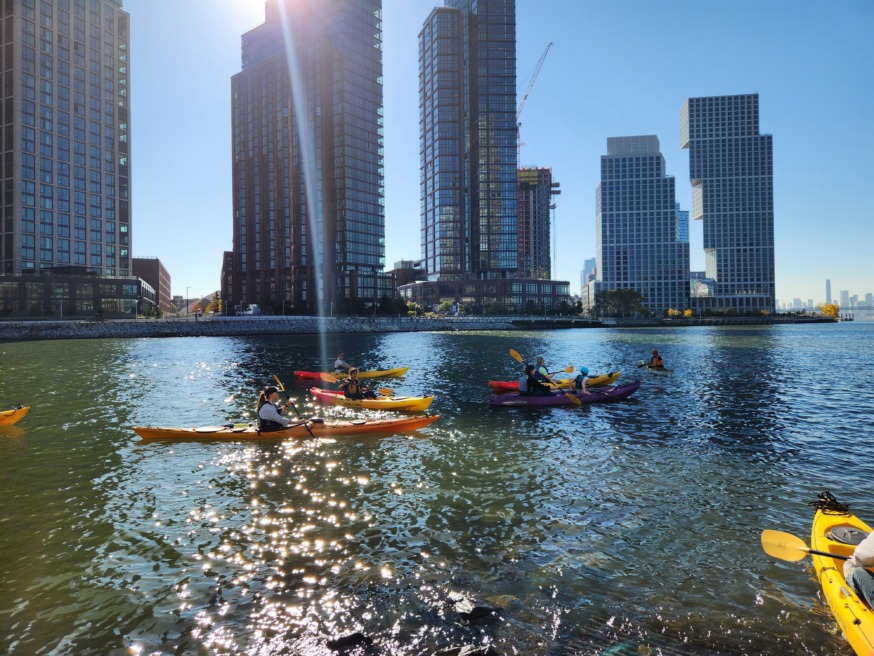
The Queens Landing Boathouse, which opened last October on the waterfront of Hunter’s Point Park South, is now hosting STEM-based field trips for schools, camps, and other groups.
As part of the program, Newtown Creek Alliance is hosting field trips for school groups of all ages focused on marine ecology and climate change adaptations.
Visiting students will learn about water quality and pollution at Newtown Creek during the school field trips, including the impacts to marine life and the value of integrating green infrastructure and resilient design to combat climate change.
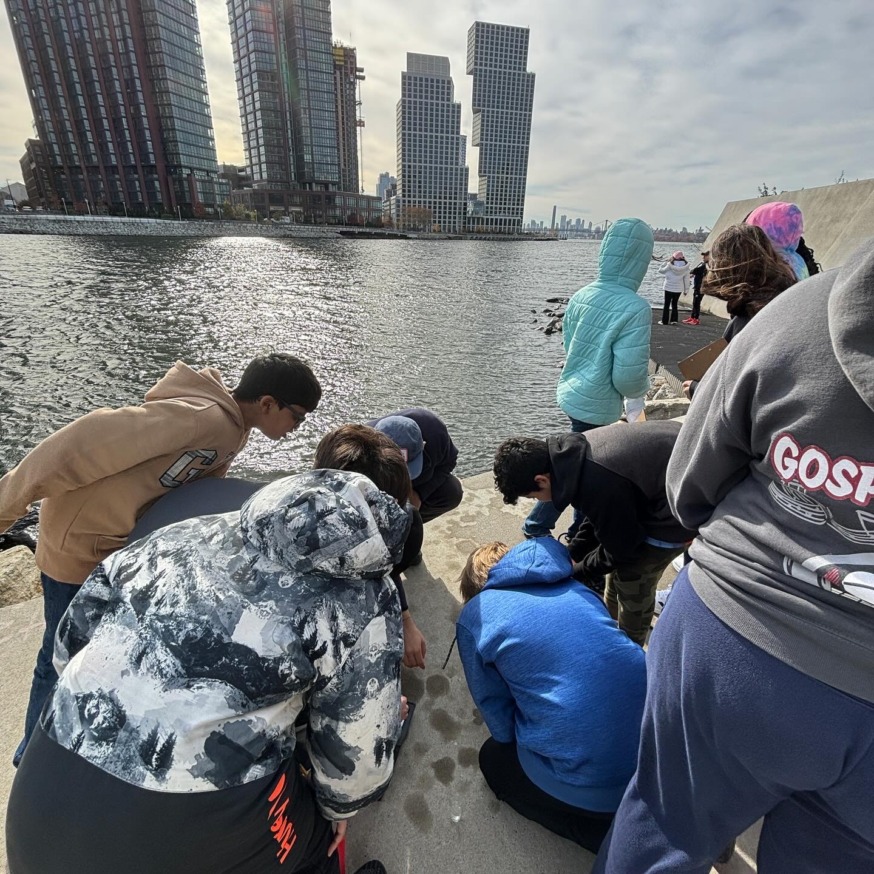
Meanwhile, Hunter’s Point Parks Conservancy (HPPC) will provide free public programming, including nature and bird walks, education programs on Newtown Creek wildlife, nature journaling classes and kids programs as part of the organization’s Summer Kids series.
The tanks, which can be viewed from the street, allow visitors and students to learn about the marine plants and animals native to Newtown Creek, including multiple fish and crustaceans.
“We are excited to continue to build out this space and add more environmental programming and boating opportunities,” Basch said in a statement. “We look forward to this center becoming an essential amenity to the community”.
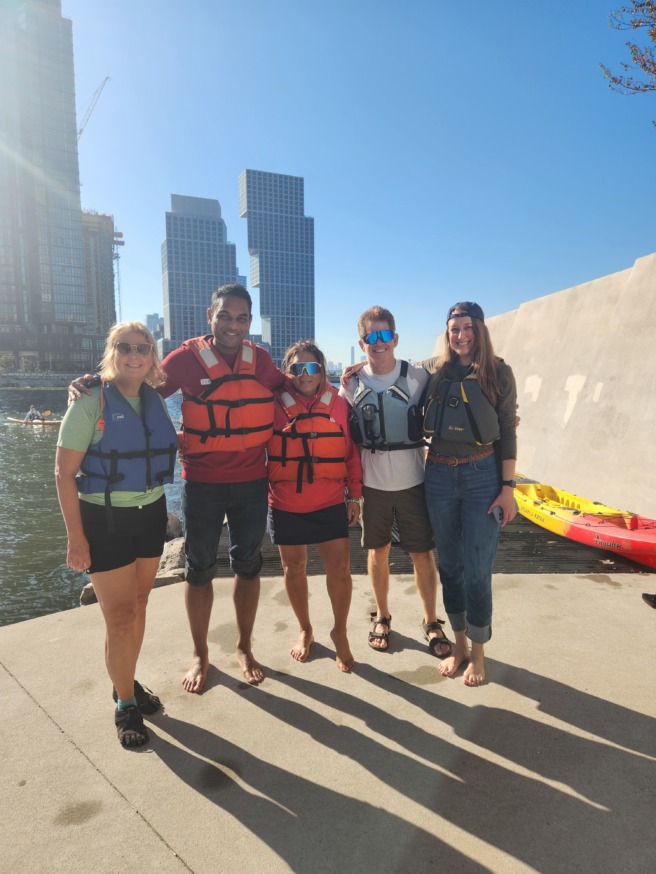
Tess Wenstrup, Environmental Education Coordinator with Newtown Creek Alliance, added that the new program will help the organization to inspire a new generation of advocates.
“ NCA is very excited to be offering urban ecology field trips at the new Queens Landing location,” Wenstrup said in a statement. “We run hands-on programs for grades K-12 focusing on marine ecology, Newtown Creek history, and climate adaptation, so the new space allows us to better engage the many local schools in LIC and help grow the next generation of waterway advocates
In addition to educational programs organized by HPPC and the Newtown Creek Alliance, the North Brooklyn Community Boathouse will be hosting public paddle events on the Creek later in the year once the water is warmer.
The free events will allow people of all levels of experience to take short trips along Newtown Creek, with experienced guides providing an overview of paddling basics and boating safety. The tours will additionally provide information about the Creek and allow New Yorkers to reconnect with their local waterways.
Newtown Creek, a 3.8-mile-long tributary of the East River that forms part of the border between Queens and Brooklyn, has been rejuvenated in recent years due to a decrease in pollution. An abundance of marine life has returned to the Creek in recent years, including blue crabs at the mouth of the tributary and wetland plants that have taken over abandoned sediment pipes.
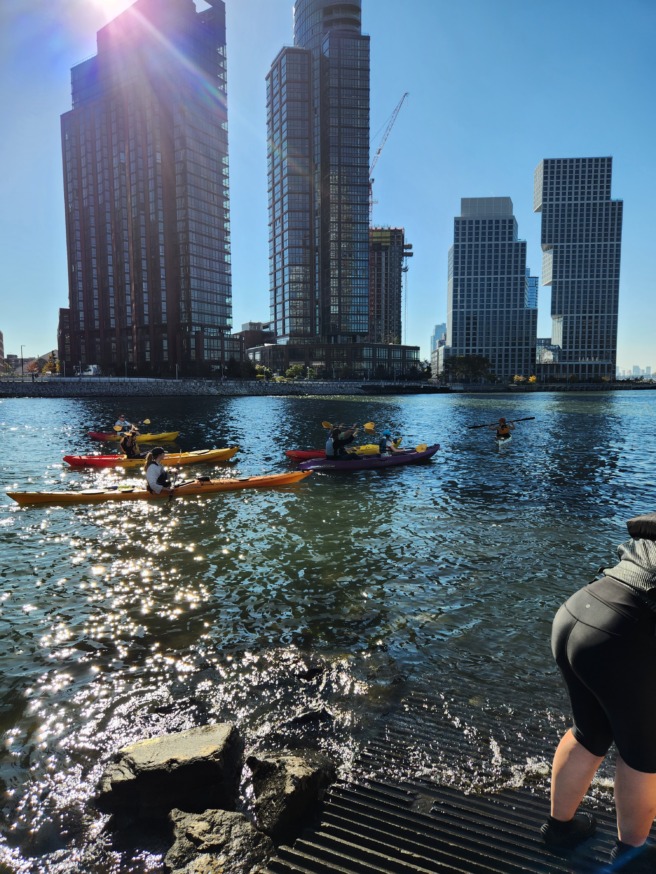
About the Author
Jobs in new york, add your job.
- The 13th Child Behavior Analyst, P.C. ABA Therapist
- MDG Design & Construction LLC Section 3 Work Opportunity
- NY ELITE CANNABIS- NYS LEGAL ADULT USE DISPENSARY Sales Personnel/ BAYSIDE
View all jobs…
Things to do in queens.
Post an Event
Bad Trip Storytelling Show QED

NYSCI Eclipse Watch Party New York Hall of Science

Ayuda gratuita en línea con los deberes y mucho más para niños de primaria a secundaria. Queens Public Library

Evening Story & Pajama Time Alley Pond Environmental Center

Footsteps for Progress 5K Run/Walk Alley Pond Park

Watercolor Workshop: Spring Blooms Queens Botanical Garden
View All Events…
Latest News

Get Queens in your inbox
Dining & nightlife.

Entertainment
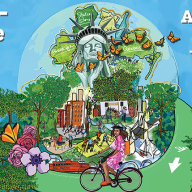
Police & Fire
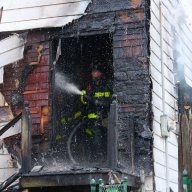
Related Articles
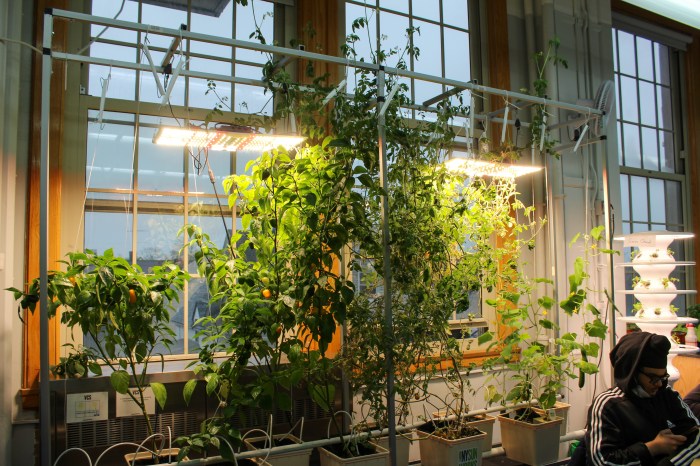
More from Around New York
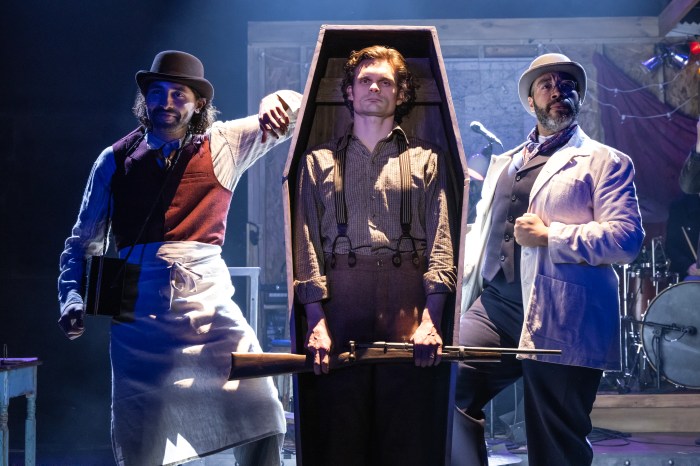
10 current Off-Broadway shows you should see this April
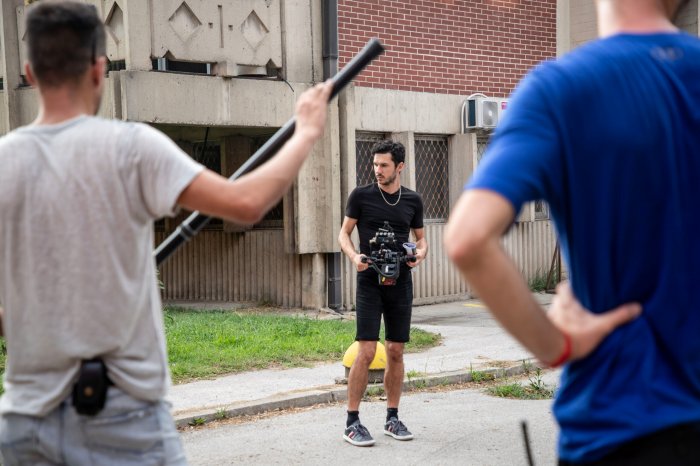
Q&A with ‘Housekeeping for Beginners’ filmmaker Goran Stolevski

Dan Rattiner speaks with Kimberly J. Nichols, CEO and executive director of the Animal Rescue Fund of the Hamptons (ARF) – Episode 179

How Qualifying New Yorkers Can Get Taxes Done for Free
Queens’ job board.
- Secrets of NYC
- Film Locations
- Architecture
- Arts & Culture
- Food & Drink
- Behind the Scenes
- About Untapped New York
- Jobs and Internships
- Advertise with Us
latest posts
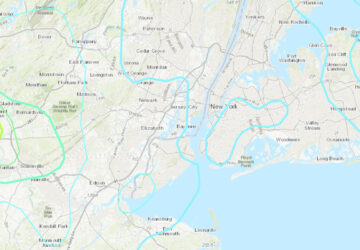
New Yorkers React to 4.8 Magnitude Earthquake in NYC
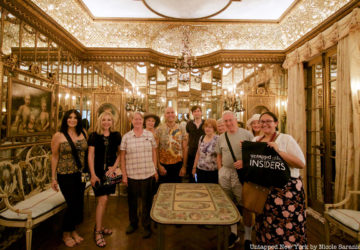
Untapped New York Insider Events – April 2024
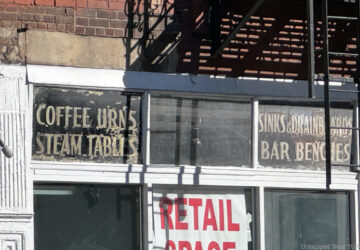
Ghost Sign Reveals Retail History of Former Bowery Flophouse
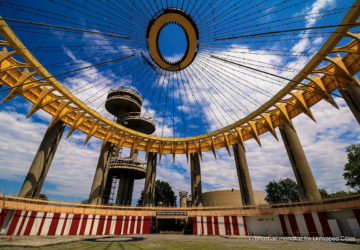
Remnants of the 1964-65 NYC World’s Fair in Flushing Meadows-Corona Park

Newtown Creek Nature Walk Expansion in Greenpoint Opens
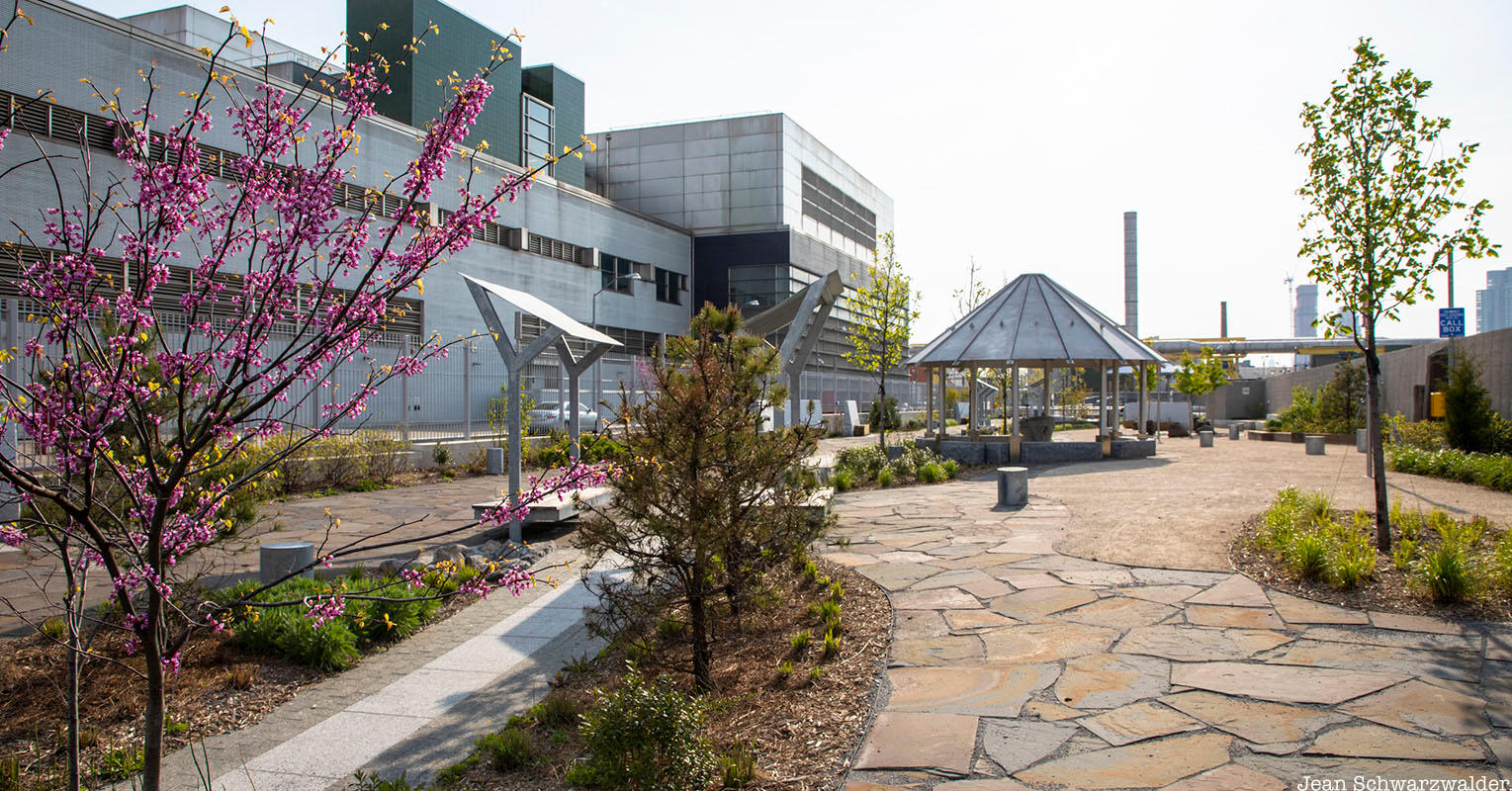
The Newtown Creek Nature Walk , located in Greenpoint , Brooklyn, is a public esplanade that wraps the waterfront edge of the city’s largest wastewater resource recovery facility . Artist George Trakas was commissioned through the City’s Percent for Art Program to create a site-specific artwork as a part of the comprehensive upgrade of the wastewater facility in the late 1990s. The first phase was completed by DEP in 2007, and now the eagerly anticipated new expansion is open to the public.
Beyond providing much needed public open space, the Nature Walk delves deeply into the history of Greenpoint, Newtown Creek , and the centrality of water to all life on earth. The artist imbued these themes into the design of the public amenities, from the seating elements to the planting and even the trash receptacles.
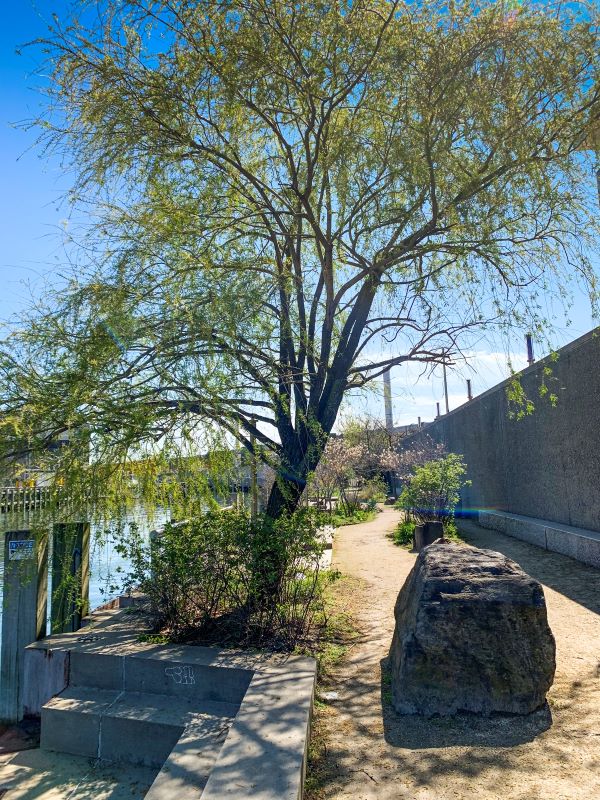
The Newtown Creek Nature Walk is planted with native trees, shrubs and other flora, to revive a long-inaccessible industrial shoreline for public use as a waterfront promenade. The walk features a 170-foot-long “Vessel” passage to the waterfront evoking the angled timber construction of ships once built along the East River . The walk also features nine 12-inch-thick granite slab steps that ascend out of Newtown Creek, each with scientific names etched on them to trace the evolution of the Earth through geologic and biologic eras that include forms of life native to Newtown Creek and Greenpoint . While there, check out seven stone circles, etched at various angles with local, native place names used by the Lenape help visitors visualize the places they identify. Another noteworthy feature is a 1,400-pound granite table in the shape of a shipping bollard, the cylindrical posts used to secure ships in port. The table also features an etching of Newtown Creek’s original watershed.
On July 22, join the NYC Department of Environmental Protection ’s Alicia West and George Trakas on a virtual walking tour of the newly expanded Newtown Creek Nature Walk . Learn directly from Trakas about the inspiration and construction of the City’s largest Percent for Art commission. See the transformation of the Newtown Creek waterfront since the 1990s. Discover the details of the Nature Walk in preparation for your own in-person visit and attend a live Q&A with the artist following the virtual tour. The event is free for Untapped New York Insiders (and get your first month free with code JOINUS).
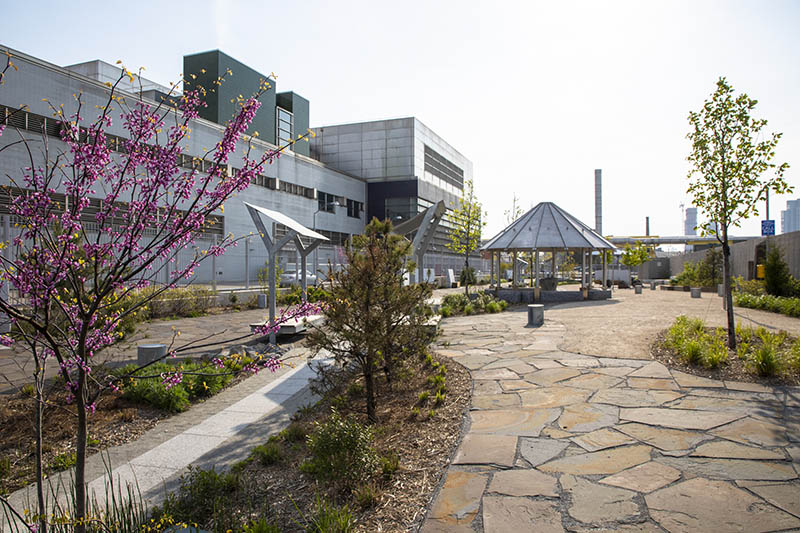
Newtown Creek Nature Walk Tour
Newtown Creek itself has quite a fascinating but troubling history. The three-and-a-half-mile-long estuary used to be one of the most heavily used — and most polluted — waterways in the country. The creek is the site of one of the largest oil spills in U.S history — the culmination of decades of oil leakage. The creek has been undergoing cleanup efforts after it received a Superfund from the Environmental Protection Agency in 2010.
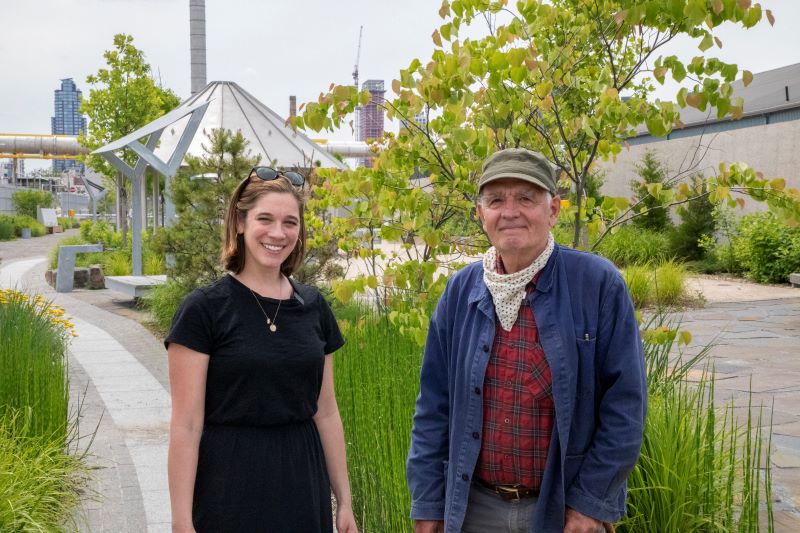
Newtown Creek is also the site of numerous combined-sewage overflow sites (CSOs). There have been dozens of sites along the creek where sewage was and still is dumped whenever the rainwater system becomes overwhelmed during storms. One of the most notorious stenches that permeated the neighborhood in 1855 originated from the Peter Van Iderstine plant, which turned the entrails of butchered animals (including at least one ten-ton circus elephant) into animal feed, fertilizer, and glue. Recently, 216 small, tightly-wrapped, plastic bags containing a mystery substance were found floating together in the creek. Rockefeller ’s Standard Oil Company also owned a site at Newtown Creek. To add insult to injury, on October 5th, 1950, an explosion rocked Greenpoint, ripping a 10-foot-wide hole out of the pavement at the junction of Manhattan Avenue and Huron. It sent concrete shrapnel flying, blew 25 manhole covers up to three stories high and shattered windows in over 500 buildings.
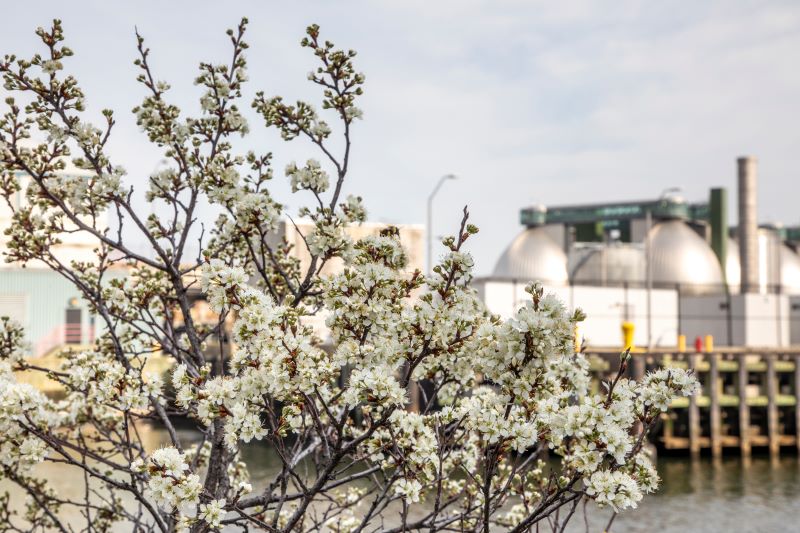
However, with restoration efforts well underway, the creek has had quite a few positives . Next door to the Newtown Creek Wastewater Treatment plant in a nondescript, 100-year-old industrial building is the art gallery Last Frontier . Founded in October 2015 by Norwegian artist Sol Kjøk, the art space and work studio serves as a combined work space and presentation arena for international artists across various disciplines. Jell-O was surprisingly started at a factory on Newtown Creek in 1845.
Despite the creek’s pollution, on December 23rd, 2015, Clean Water Advocate Christopher Swain swam the entire length of the creek, thus becoming the first person in history to do so. Kingsland Wildflowers , a little-known native wildflower rooftop garden located in Brooklyn along Newtown Creek, also recently opened to the public. The garden seeks to promote New York City’s wildlife and provide educational programming regarding sustainable conservation.
On July 22, join the NYC Department of Environmental Protection’s Alicia West and George Trakas on a virtual walking tour of the newly expanded Newtown Creek Nature Walk . The event is free for Untapped New York Insiders (and get your first month free with code JOINUS).
Next, check out 10 NYC Walking Trails to Try This Summer !
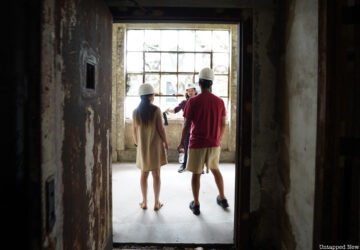
Things to Do This Week in NYC: April 3rd – 10th
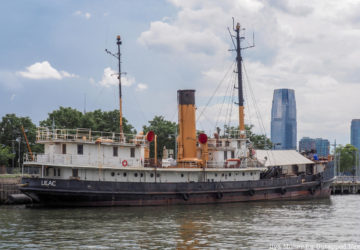
View NYC’s Solar Eclipse from the Deck of a Historic Steamship


Greenpointers
Neighborhood News in Greenpoint and Williamsburg, Brooklyn
Following the Flush: What we Learned on the Newtown Creek Digester Egg Tour
Share this:

The NYC Department of Environmental Protection is in Love! The municipal organization hosted a Valentines Day tour of the Newtown Creek Wastewater Treatment Plant on Saturday, and the complex’s iconic Digester Eggs (more or less affectionately known as Shit Tits) were all decked out in red for the occasion. Donning hard hats and reflective vests, we got a rare look at the inner workings of New York City’s largest wastewater treatment plant. From fascinating facts (did you know the DEP has its own Fleet!?) to stunning views from the glass-enclosed pedestrian walkways that connect each egg, we picked up some exciting intel as well as some dope swag: I proudly display my NYC Sewer Manhole Cover pin.

That pride and passion are evident at Newtown Creek! DEP personnel at the Treatment Plant brought a contagious enthusiasm to highlighting the Plant’s elegant engineering and environmental equity that made the tour’s amorous theme appropriate: for Deputy Commissioner of the Bureau of Wastewater Treatment Pam Elardo, this is a labor of love.
Elardo told us that her lifelong goal is to make sure people know what happens when they flush the toilet. Read on to find out for yourself!

Elardo explains that cleaning wastewater is part and parcel with cleaning the environment: What comes out of the plant is cleaner than what goes in to such a degree that Newtown Creek itself is cleaner than it’s been in over 100 years. A sewage treatment plant can clean the environment because the Plant is “a resource recovery factory.” It takes in waste and turns it into clean energy that can be put back into the system. Eventually, Elardo hopes to be putting back as much energy as the plant takes in, so that the system will run at total carbon neutrality.
But what actually goes into the plant? Lots of things that shouldn’t. Elardo explains that the only things it’s appropriate to flush are bodily excretions and toilet paper. Anything else, even if it’s marked flushable, is not flushable. The Department spends over 7 million dollars every year removing non-flushable items from the system, and that’s just at Newtown Creek.

Newtown Creek is the largest of the city’s wastewater treatment plants, processing 310 million gallons every day. That accounts for Brooklyn’s wastewater as well as 1/5 of Manhattan’s flow and 1/7 of Queens’. When it rains, the Plant takes on more than twice that flow, contending with 750 million gallons daily.

While Newtown Creek might be the largest treatment plant, it is not the City’s oldest. Brooklyn’s original sewers were built in the second half of the 19th century, and the first wastewater treatment plant in the city was established at Coney Island in 1892 to keep the beaches clean. Those municipal improvements coincided with the City Beautiful Movement, aimed at uplifting the populous through public health initiatives. Accordingly, the City’s original sewage treatment efforts were meant to help prevent disease from contaminated water, curtail the burgeoning sewer rat population, and rid the city of unpleasant smells.
In the early 20th century, the Metropolitan Sewage Commission found dead zones in the rivers, where fish and plant life could not live. At that time, the environmental role of sewage treatment started to become clear, but it wasn’t until the Clean Water Act of 1972 that those efforts began in earnest.

Today, New York City has 7,400 miles of sewers, and the water that flows into the Newtown Creek Plant then goes through a six-step treatment process:
- Preliminary Treatment (removes large debris).
- Main Sewage Pumping
- Primary Treatment (removes heavy solids such as stones, rocks and sand).
- Secondary Biological Treatment (Here’s where aeration tanks keep bacteria alive to break down the sludge).
- Final Settling (turns sludge into fuel and new bacteria that will keep the cycle going!)
- Disinfection (they use a sodium hypo-chloride solution about 8 times stronger than Clorox).

If you can’t make it into the Eggs themselves for a look, there are plenty of green initiatives spearheaded by the DEP you can see all around you. For example, you might catch sight of the Fleet! The DEP’s Sludge Barges transport fertilizers throughout the country. Alternatively, green infrastructure like green roofs divert storm water away from the sewer system so that it doesn’t have to be filtered for no reason!
The DEP gives tours of the Digester Eggs three times a year. The next one will be in April, for Earth Day!

Leave a comment
Cancel reply.
Your email address will not be published. Required fields are marked *
Save my name, email, and website in this browser for the next time I comment.
Notify me of follow-up comments by email.
Notify me of new posts by email.
{{#message}}{{{message}}}{{/message}}{{^message}}Your submission failed. The server responded with {{status_text}} (code {{status_code}}). Please contact the developer of this form processor to improve this message. Learn More {{/message}}
{{#message}}{{{message}}}{{/message}}{{^message}}It appears your submission was successful. Even though the server responded OK, it is possible the submission was not processed. Please contact the developer of this form processor to improve this message. Learn More {{/message}}
Submitting…
Stunning New York City Views, From a Sewage Treatment Plant
Published on 2/19/2013 at 3:30 PM

If you're visiting New York but you've already taken the Sex and the City tour, try something even more poopy: the free monthly tour of the Newtown Creek Wastewater Treatment Plant , one of 14 similar plants designed to handle both stormwater and the stuff that comes out when you drink too many cosmos because Mr. Big stood you up, or you pissed off Aidan because you're still hung up on Mr. Big, or you just realized Mikhail Baryshnikov is actually quite old
Newtown Creek handles 310-million gallons of wastewater from about 1.1-million New Yorkers daily, nestling its environmentally conscious industrial space into Brooklyn's Greenpoint neighborhood -- even though environmentally conscious industrial spaces are, like, way more of a "thing" around the Morgan stop
Once a month, the plant offers tours that not only deliver attendees a New York sewage history lesson, but also stunning views of the east side of Manhattan from the top of the plant's digester eggs
The day begins with an info session hosted by Jim Pinn, the plant's superintendent of 21 years, and a DEP employee for 40 years. A self-described "product of civil service", the ridiculously charismatic host says that despite the fact that eventually all public servants get promoted to the point of incompetency ("The Peter Principle"), he's not there yet. Phew
Cram session time: The need for water treatment arose in the late 19th century as America's urban centers began to burst at the seams due to population growth, and because the seams were probably made in low-quality sweatshops. While Mama Nature can purify water on her own in about 20 days, human intervention is required when dealing with that many people's crap (literally), lest the city's waterways become rivers of the stuff. Sampling stations like the one pictured above are used to let scientists know how they're doing, purification-wise. The most popular joke at this station? "You first.
Water treatment deals with three big problems caused by having 8.2-million people living on just over 300 square miles of land: 1) cholera, dysentery, and other diseases known to kill off members of your party along the Oregon Trail; 2) odors; 3) pests like mosquitoes, rodents, and, apparently, plastic alligators
"Wastewater treatment, the subway, and the Yankees are what make us all happy to live together," says Pinn
After the talk, you'll take a stroll to the digester eggs -- this one topped with a blue, glass walkway -- which are so hugundous that you can see them from a fifth of a mile away. That's further than it sounds like. Try jogging right now, you'll find out
Happy Easter
The plant also runs special tours on Valentine's Day. Here's Shawn & Courteney on why they decided to hit up this unusual date spot. Shawn: "She hates romance, so I decided to surprise her." Courteney: "The overriding emotion of the last ten years of marriage has been disgust, so where better.
View from the top. After multiple treatment stages, much of the organic material removed from sewage is broken down by the digester eggs into water, carbon dioxide, and methane gas, leaving only a digested sludge. This in turn is dewatered to form a cake-like substance, which is where cake comes from. Also it can be used as a fertilizer
Meanwhile, the purified water is released back into the East River. Where exactly? Right across from the United Nations. Take that, international diplomacy and cooperation. USA! USA! USA! USA
Tour Tip #1: Don't stray too far from the digester egg platform the group stops at. Once you go all the way down one of these connector corridor bridges, you get a noxious nosefull of, to use Jim's technical term: "that rotten egg smell"
Tour Tip #2: Stand at the Brooklyn-facing windows, and challenge your travel-mate to a round of "Industrial Loft Apartment Building or Actual Industrial Loft Space"
Well, that's the tour of Newtown Creek Wastewater Treatment Plant. You wanna take 'em out, Jim
"Snuggle with your others tonight, and talk about wastewater treatment. Get the discussion on the table!

- Share full article
Advertisement
Supported by
Your Guide to a Tour of Decay

By Steven Stern
- June 15, 2012
STAND on the pedestrian walkway of the Greenpoint Avenue Bridge, and you might notice a vaguely ominous red brick tower on the Queens side of the Newtown Creek, looming over the railroad tracks and asphalt plants.
If Mitch Waxman is your guide, he will identify it as the derelict smokestack of Peter Van Iderstine’s fat-rendering business, which first set up shop in 1855. But he won’t stop there.
He will expound on the archaic waste-disposal operations that once flourished on the creek, conjuring scenes of putrescent horse carcasses floating in on barges from Manhattan and docks piled with manure three stories high. The narrative will extend to Cord Meyer’s bone blackers and Conrad Wissel’s night soil wharf — the gothic names of these forgotten businesses rattled off in a distinct Brooklyn accent.
At some point, he will start in on the horrors of the M. Kalbfleisch Chemical Works, eventually making his way to the sins of Standard Oil.
If the city’s dead industries leave ghosts behind, Mr. Waxman is an adept medium.
The Newtown Creek watershed, his field of expertise, is a place where such specters are all too real. In the murky depths of the 3.8-mile estuary, the past haunts the present. Since the creek was designated a Superfund site in 2010, contractors from the Environmental Protection Agency have been dredging and testing in search of that past. The sludge acid that the Kalbfleisch factory sluiced into the water back in the 1830s is of more than academic concern.
Not that Mr. Waxman is any sort of an academic. While the Newtown Creek Alliance , an environmental advocacy group, lists him as its resident historian, his credentials were earned on the street and the Internet, through countless solitary walks and countless nights poring over obscure archives. (“Mitch got that title by proving it, over and over,” said Kate Zidar, executive director of the organization.)
Formerly a comic-book artist and writer, Mr. Waxman earns his living doing photo retouching out of his apartment in Astoria, Queens. Since 2009, he has documented his passion for the creek — in oddly beautiful photography and beautifully odd prose — on his blog, The Newtown Pentacle .
Lately, he has been leading public walking tours of the waterfront for the alliance and other groups, as well as personally guiding anyone else who comes calling. He has lectured to local politicians and environmentalists, shepherded documentary filmmakers around Calvary Cemetery and taught German industrial ecology students a thing or two about sewage. Somehow, almost everyone interested in the polluted waterway seems to find his or her way to Mr. Waxman. He’s become a docent of decay, the cicerone of Newtown Creek.
MR. WAXMAN begins his tours with a well-rehearsed opening line: “This is not the world you know.”
For most visitors, that’s probably true. The Newtown Creek area was once one of the nation’s great manufacturing centers, the waterway carrying more freight than the Mississippi River. Walking around the massive factory buildings of the Degnon Terminal in Long Island City, Queens, now mostly repurposed as warehouses, you catch a glimpse of a lost working-class city only blocks from the gleaming condominiums now rising by the East River.

After World War II, that industrial greatness faded, just as its environmental cost started to become apparent. A 1950 sewer explosion in Greenpoint, Brooklyn, was the first indication of the huge quantities of petroleum poisoning the water and leaching into the soil. But the full extent of the damage wasn’t discovered until the late 1970s: At least 17 million gallons of oil spilled over the previous century (more than the Exxon Valdez), much of which, after years of legal wrangling and recovery efforts, is still there.
Mr. Waxman calls the area a “municipal sacrifice zone” — the urban equivalent of the bomb test sites of Nevada. And his tours are meant in part to expose the unsavory infrastructure that has been shunted there. He can name the 19 waste-transfer stations lining the creek and point out each of the 23 combined sewer outflows that disgorge their contents into the water. The lurking danger of the creek’s emanations is a constant undercurrent. He will intone: “The very air you’re breathing is a poisonous fume!”
But despite the toxic atmosphere, Mr. Waxman is clearly in love with the place. Based on the enthusiastic groups that show up for each tour, that perverse attraction is shared by others.
The journalist Andrew Blackwell , who traveled to some of the world’s most polluted places for his recent book, “Visit Sunny Chernobyl,” seemed unsurprised that such a blighted area would hold an aesthetic appeal. Ravaged industrial sites, he suggested, might actually fulfill a longing for nature.
“Part of what people are looking for in a wilderness experience,” Mr. Blackwell said, “is the sense that it’s not a mediated thing, that it’s not made for them. A place like Newtown Creek isn’t a product. It’s supposedly a place that no one wants to go. That almost makes it more wild, makes people feel like they’re discovering something about the world.”
Mr. Waxman’s own discoveries began, strangely enough, as an effort to improve his health.
Until 2006, his life was sedentary and circumscribed, revolving around wife, dog and (primarily) computer. “My friends called me ‘veal,’ ” he said, “because I never left the little white room.”
That led to a heart attack at 39, a weeklong hospital stay and a command to exercise. So he began walking. Headphones blasting Black Sabbath, camera at his side, he circled out from Astoria, exploring colonial graveyards, abandoned factories and, eventually, the Newtown Creek waterfront.
“I started to see all these things I couldn’t explain,” he said. So began the cycle of wandering and research that continues to this day. “The more time you give it, the more stuff you find, and the more questions get asked,” he said.
These questions brought him in contact with a circle of like-minded seekers: amateur urbanists and self-taught historians, railroad enthusiasts and infrastructure aficionados. In their company, Mr. Waxman distinguished himself as someone equally comfortable on the street and in the archive. “Mitch is the type that will go up to a stranger and ask things,” said Kevin Walsh, creator of the popular urban history blog Forgotten New York . Mr. Waxman’s social ease, combined with a willingness to share the knowledge he was acquiring, helped him “make allies among the people who work along the creek,” Mr. Walsh said.
ONE day, Mr. Waxman signed up for a boat tour narrated by Bernard Ente, a maritime devotee from Maspeth. They hit it off, and Mr. Ente, a founding member of the Newtown Creek Alliance, became a sort of mentor. When he died, in April last year, Mr. Waxman essentially stepped into his shoes.
The distinctively apocalyptic spin he brings to his newfound role, however, is his alone. That “sense of looming menace” comes to full flower on his blog. An oddball mix of history, reportage and genre pastiche, it is written in a self-consciously florid prose modeled on H. P. Lovecraft, the cultish writer of pulp horror fiction. Slipping in and out of the voice of a demented antiquarian, the daily posts portray the creek as home to unspeakable, possibly supernatural, terrors.
“You have these buried secrets,” he said, explaining the thinking behind the occult conceit. He’s spotted early-19th-century terra-cotta pipes protruding from bulkheads, antique masonry sewers connected to who knows what. He added: “There really is no telling what’s in the ground there.”
The more Mr. Waxman discovers about the creek’s hidden past, the more he has become an advocate for its survival. Last summer, while out on the water surveying bulkheads with the crusading conservation group Riverkeeper , he discovered and documented a previously unreported oil spill on the Queens side.
His fascination with the darker aspects of the landscape has made him a fitting counterpart to the environmentalists working toward its future. As E.P.A. scientists begin the long process of rehabilitating the waters, Mr. Waxman is engaged in a parallel effort. His work is a kind of historical remediation, reclaiming the waterway’s forgotten role in the life of the city.
“It’s an odd thing,” he said. “The creek has been waiting for me all this time. And I’ve been waiting for it.”
CREEK WALK 2017
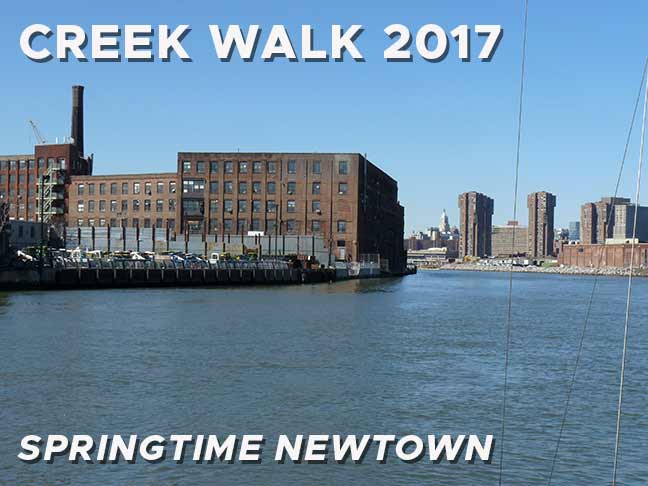
SUNSHINE is my undecaffeinated coffee, my 5 Hour Energy, my Red Bull. I get more done on days with full sunshine than I do on overcast days; nonetheless, I have completed scouting for FNY pages and tours in every conceivable weather including rain and snowstorms. In over 150 live tours from 1999 through 2019 (and I hope to continue sometime but health will have to cooperate), I was mostly fortunate with the weather. One person, though, who always seemed to luck out with wall to wall sunshine for his own tours was the Newtown Pentacle ‘s Mitch Waxman, the longtime chronicler of Newtown Creek and its environs. He always seemed to have full sun for his tours though he, like me, scheduled them weeks in advance. Seeking a change of scenery, Mitch and his wife Catherine moved to Pittsburgh in December 2022, where he continues the Newtown Pentacle despite his new location.
In the April 2017, Mitch, a member of the Newtown Creek Alliance , conducted one of his Newtown Creek tours. It was an all-day affair comprising approximately 8 hours with over ten miles of walking. I accompanied the group on the first leg of the tour, but finding myself hopelessly behind the rest, I decided to call it a day when we got to the now-deceased Goodfellas (originally Clinton) Diner on Maspeth Avenue. (Sometimes I feel I am the only native New Yorker who walks slowly.) A few weeks later, in a walk that included me and filmmaker Heather Quinlan , we mostly covered the remainder of the tour; I will get to that portion at a later date, but today, I will touch on the original Creek walk.
Newtown Creek, a naturally-formed inlet of the East River, was one of the northeast’s first superhighways, in use by Native Americans for untold centuries before the white man arrived in the early 17th Century. Dredging and industrialization ensued, solidifying the Creek in concrete and formalizing its length and those of its tributaries, Dutch and English Kills, Whale Creek and others. Railroads and highways accompanied its length as well. Manufacturing and industry arrived, with rendering of domesticated animals, paint and varnish manufacturing, disposal of scrap metal, and other activities of the Age of Industry. The Creek itself, as well as deep underground in surrounding territories such as Greenpoint, Dutch Kills and Maspeth, were hopelessly contaminated in what many fear to be a permanent condition. Plans are now underway to alleviate the pollution , but will the area ever be made clean again? It may take hundreds of years even if efforts are intensive. Nature is hardy, however, and some fish, crabs, turtles and water birds can be found here. Tall tales abound that large snapping turtles that can hold their breath underwater for lengthy periods are in the Creek’s depths. Newtown Creek has gotten rather cleaner over the past decade but it remains quite toxic.

The tour began near where the Creek empties into the East River. Shown here is a a short stub of Vernon Boulevard which exists south of the Long Island Rail Road tracks just east of the Long Island City station, once an important connection to ferries playing the river, but relegated to a relative system backwater since Penn Station opened in Manhattan in 1910. Seen is the spire of St. Mary’s Church at 49th Avenue, which has been a presence in Hunters Point since 1870. This 1903 church is actally the third church building of the parish on the site: the previous two had been fire victims. On 49th Avenue the church is accompanied by satellite school and lyceum buildings.
Vernon Boulevard, until the 1950s, had gone across Newtown Creek via a steel truss bridge, connecting with Manhattan Avenue on the other side; its former presence is marked by widenings of Vernon Boulevard and Manhattan Avenue on either sides of the Creek. The bridge was replaced by the Pulaski Bridge, connecting 11th Street with Oakland Street (later McGuinness Boulevard) the same decade.
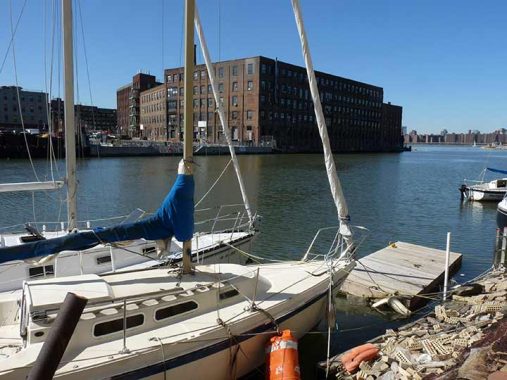
Had we visited this locale on the Creek before the 1950s, the view would have been obstructed by the Vernon Boulevard Bridge. The grand old brick building seen here at Manhattan and Commercial Streets in Greenpoint is the 1868 Chelsea Fiber Mills building, a manufacturer of marine rope. In recent years it has been home to the Greenpoint Manufacturing and Design Center . “GMDC has played a vital role in helping meet New York City’s need for affordable, flexible production space for small and medium-sized manufacturers.”
As we can see Newtown Creek, despite is polluted character, has developed into a center for recreational boating and kayaking. The North Brooklyn Community Boathouse , located across the Creek, regularly schedules organized “paddles” on the Creek.
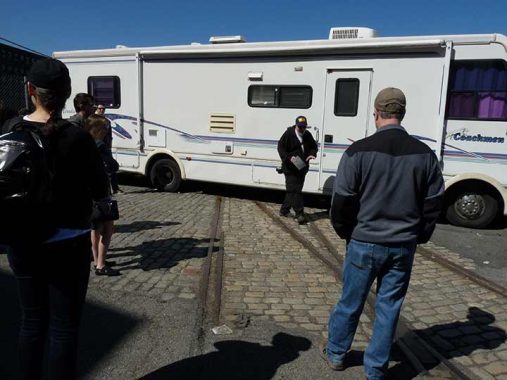
Active railroads, and some deceased ones, accompany Newtown Creek. Here Mitch Waxman exhibits what are likely trolley tracks on Vernon Boulevard; Hunters Point was a western terminal for a number of trolley lines run by Steinway Lines between 1922 and 1939. Occasionally trackage from these lines peeks above worn-down asphalt pavements.
The tour winded beneath the Pulaski Bridge, where a rare grade crossing of the Long Island Rail Road was encountered. The bridge has a handy, but steep, staircase to the street below.
The Pulaski Bridge, opened in 1954, is a bascule bridge in which counterweighted deck members pivot upwards to allow shipping to pass underneath. London’s Tower Bridge is another example of a bascule, albeit a much more ornate one.
General Casimir Pulaski (1747-1779) is regarded as the father of the American cavalry. He was enlisted by Benjamin Franklin in Paris after successfully defending Poland against a Russian invasion and falling out of favor after his implication in a plot to kill the Polish king. He was able to cover George Washington’s retreat at the Battle of Brandywine with expert use of cavalry; he was subsequently awarded command of all US cavalry. In 1779 he helped break the British siege of Charleston. He was mortally wounded at Savannah, GA in 1779 at the young age of 32.
The Pulaski Bridge replaced the Vernon Boulevard Bridge (see above). About 15 years ago the Pulaski received a protected bike lane, which ended the dangerous conditions caused by bikes and walkers sharing the bridge’s walkway.
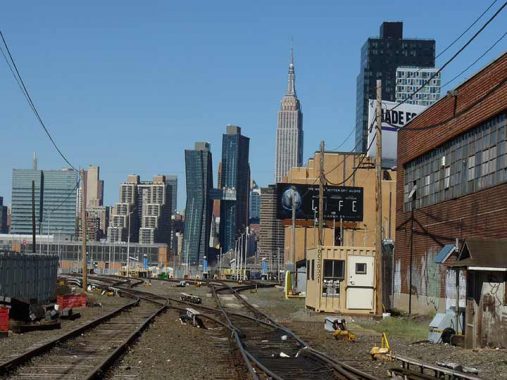
Looking west on the LIRR tracks toward Manhattan’s East Midtown and the K-shaped American Copper Building towers , one of which has an unusual angled design that makes them look from across the East River in Hunters Point as a giant reverse letter K or perhaps a crooked letter H. The two towers are residential, despite their industrial sounding name, and are connected by a pedestrian skybridge. The two buildings do have copper cladding, with both open for occupation in 2018.
Arguably NYC’s busiest railroad grade crossing is on busy Borden Avenue just east of the Pulaski Bridge. I am sufficiently fascinated by NYC’s RR grade crossings, of which just a handful remain, to have done a FNY series on them in 2014.
Borden Avenue was built as a plank road in 1868; at first it extended east only as far as Calvary Cemetery, but by the 1920s, it had been built as a main traffic route as far east at Grand Avenue and 69th Street in Maspeth. When the Queens-Midtown Expressway was built after World War II, Borden Avenue became the service road on the north side of the expressway and it still terminates at Grand and 69th — east of that, the service road is labeled Queens-Midtown Expressway. All service roads change to Horace Harding Expressway east of Queens Boulevard. The name was of a local landholder and has nothing to do with the Borden’s of Elsie the Cow.
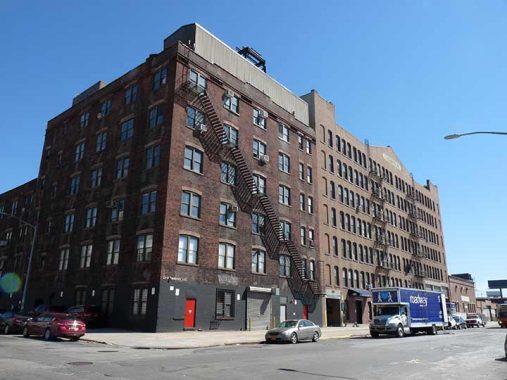
At 21st Street and Borden Avenue are a pair of stolid brick manufacturing buildings of whose type I so admire. The furthest away is the many-windowed Blanchard Building, its U changed to a V by stonecarvers under orders to make the “U” the Roman “V” to impart majesty and permanency. Its upper floors look out on Newtown Creek. In this part of Hunters Point, the residential fever that has taken over the west side of the neighborhood near the East River hasn’t reached its business side. The Blanchard looked across the street at former Fresh Direct depot on Borden.
In a former life the Blanchard was a factory that made fireproof doors and shutters. Some years after a fire started in the Columbia Paper Bag company engulfed it in flames, Blanchard rebuilt, only to merge with the John Rapp Company, becoming the United States Metal Products Company.
I am also a fan of rickety pedestrian bridges. Mitch Waxman Pied Piper’d us across this one at 21st Street that crosses the Long Island Railroad cut. Lollygagging on this bridge, especially on weekday mornings, will allow one to view numerous passing trains en route to the Hunters Point station and points east.
I discovered this bridge quite by accident in 1998, at the dawn of the Forgotten NY era. One morning I desired to take a train from Jamaica to LIC in order to ride one of the last shuttles that employed ancient MP75 passenger cars in use since the 1950s that stopped at every station along the so-called LIRR Montauk Branch, at Richmond Hill, Glendale, Fresh Pond, Haberman and LIC; these stations were being closed because the LIRR was purchasing new cars that required raised platforms, and these stations admitted 0-5 passengers per day and were not worth the cost of installing them. By 1998 these stations were grassless patches along the side of the tracks.
After de-training at LIC I headed up Borden to catch a #7 to Woodside, for a LIRR train back home or to work in Port Washington (I forget which now) but used this bridge that connects the two sections of 21st Street across the tracks and then winds under the elevated Queens Midtown Expressway. I had never seen it before!
North of here, 21st Street becomes a pedal to the metal truck route all the way to Astoria Park, and connections can be made to the Queensboro Bridge. In former times, it was called Van Alst Avenue and a G train station still bears the name.
The former Skyline Diner at 21st Street and 49th Avenue was relatively clean (on the outside) in 2017, but the interior was a mess. It was briefly a hot ticket over a decade ago when the upscale diner M. Wells briefly occupied it. It has sat lonely since then. More on this 2022 FNY page.
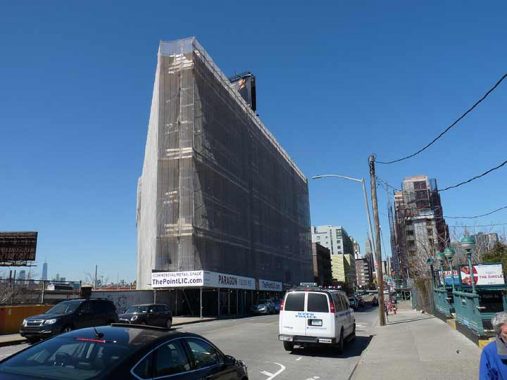
Across the street from the diner is the wedge-shaped Paragon Oil Building. The scaffolds have since been removed. It has a lengthy history, including a stint as Queens Borough Hall.
49th Avenue and 21st Street is a potential transit hub…if the MTA would only take advantage. Here we have the #7 Flushing Line Hunters Point Avenue station, and alongside it, the LIRR Hunters Point Avenue station, open only for a few trains weekdays in the mornings and evenings (I have yet to research if the new LIRR Grand Central service has impacted its schedule). These two stations can be connected to create a mini transit interchange; already, when something is wrong with the #7, the LIRR has set up shuttle service from Flushing to Hunters Point.
Mitch points to an end bumper for railroad tracks at Hunters Point Avenue and 27th Street; but today no tracks remain. This one served a track spur for a private railroad known as Degnon, after its builderMichael Degnon. The LIRR absorbed it in 1928, and while all official rail activities ceased here in 1985, it’s still possible to run trains on some of the trackage; the connection at the Montauk Cutoff has been preserved.
Trains would connect from these tracks via a routing from the Sunyside Yard over the Montauk Cutoff overpass over Skillman Avenue just north of 49th Avenue, and would run on a trunk line along Skillman and 47th Avenues with spurs along many of the side streets. This small freight line served warehouses of NYC’s great department stores such as Gimbels, Kleins, and Macys; some of their names can still be seen on buildings. Sunshine Bakeries, American Chicle gum and Swingline, with its famous neon sign were here as well. Swingline decamped to Mexico in the mid 1990s.
After forming the Degnon Construction Company in Cleveland in 1895, Michael Degnon (1858-1925), whose chief line of construction was in railroads, moved his headquarters to New York in 1897. The Degnon Company built many of the IRT’s early subway tunnels in Manhattan and Brooklyn from 1904-1908; the Steinway tunnels originally meant to carry trolley cars but later fitted for subways; what is now known as the PATH tunnel under 6th Avenue; and much of the original Pennsylvania Station.
The rising cost of doing business in New York forced all of the companies served by the Degnon RR to find other cities in which to manufacture, and the Degnon tracks in Sunnyside were defunct by the end of the 1980s. Degnon’s railroad works around the country are also numerous.
Back in 2010 I was rather rhapsodic about the handsome building, just north of Hunters Point Avenue at 27th Street. Good gravy, see the way it looks in 2023. Renovated top to bottom again but this time clad in gun metal gray, with all the extra ornamentation removed.
It was built in 1917 as the Marcus Ward Building.
[This] stationery manufacturer and printing company was established in 1848 in Belfast, Ireland. Originally known as John Ward & Sons in the first half of the 19th Century, the company grew from a small paper mill into a successful color lithographer, specializing in Victorian-styled calendars and greeting cards towards the end of the 19th Century that garnered international reputation, moving to London by the end of the 1800s. At the turn of the 20th Century, as satellite branch was established just outside of Bush terminal on 29th St in Brooklyn, where Ward remained until completion of this site and the beginning of 1917. This site, housing the company’s main manufacturing plant and company headquarters, employed between 150 and 200 people in the first decades of early 20th Century, while maintaining permanent salesrooms at 200 5th Ave in Manhattan, as well as sites in Chicago, Philadelphia, and San Francisco. Several of Ward’s brands during the early 20th Century were marketed towards the higher classes, with brand names such as “Gentlemen’s Writing Paper” and “Gentlemen’s Stationery,” white paper made from both parchment and bond paper, as well as Irish linen and Irish poplin. Other brands included the “”Papeterie des Tuilieres,” rose, blue, and pink envelopes embossed with a gold-colored four-leaf clover. By the early 1940s, however, the nearby Henry Waldes Company, also known as the Waldes Koh-I-Noor Company and initially established on 27th St and Austell Pl, purchased the facility, as well as several other factories in the immediate area, owning this building until at least the late 1970s. During this time period, the building also housed Kelvinator Corporation, a national home appliance manufacturer specializing in refrigerators. Founded in Detroit in 1914 by engineer Nathaniel Wales, the company took its name from Lord Kelvin, the founder of the mathematical concept of Absolute Zero. Wales introduced the world’s first refrigerator with automatic controls in 1918, and within five years, his company controlled 80% of the home refrigeration market. In the mid-1930s, the company unveiled its Kelvin Home design, one of the earliest attempts at mass-produced residential air conditioning and heating. During World War II, the entirety of the company’s operations were converted to military production. After a series of corporate acquisitions in the latter half of the 20th Century, the Kelvinator name continues to grace products across the globe. Currently, a film archival company known as Paramount Antiques leases space inside the factory. [Comments, Sunnyside to Hunters Point, FNY 11/1/2020 ]
The Hunters Point Avenue Bridge, which crosses Dutch Kills, opened in 1910, is a vehicular bascule bridge that replaced two earlier bridges, made of wood and then iron. It is two years younger than the neighboring Borden Avenue Bridge, which is one of four retractile bridges remaining in the USA. It celebrated its centennial in 2010, though it had been largely renovated in the 1980s.
Seldom commented on, the Hunters Point Avenue Bridge segments Dutch Kills neatly, and has done so for [over] a century now. The marshes and streams which once typified the area before the advance of railroad and vast agglutination of industrial installation are long gone, relegated to subterranean sewers and masonry clad spillways, but a century ago the Hunters Point Avenue Bridge (and its predecessors) allowed egress between the terrestrial isolation of the Long Island City center and the rest of western Queens. Newtown Pentacle
The group then headed south on 27th Street to Borden Avenue to cross the ancient Borden Avenue Bridge, built in 1908 and one of four retractile bridges in the country and one of two remaining in NYC. To save time writing this page, I’ll refer you to FNY’s post from 10/18/2011 , which details its geography, technology and history.
After about a mile’s work of walk south on Review Avenue, another LIRR grade crossing was found, this time at the section of Greenpoint Avenue that crosses the tracks beneath the J.J. Byrne Bridge. The bridge, also known as the Greenpoint Avenue Bridge, was opened in 1929 and was completely overhauled in 1987. It is the fifth bridge that has carried Greenpoint Avenue over Newtown Creek. It is a bascule drawbridge as is the Pulaski Bridge.
According to the Department of Transportation, a drawbridge first operated here in 1855, constructed by Neziah Bliss (1790-1876), who founded the neighborhoods of Bayside and Hunters Point on either side of the Creek; one of its successor bridges also carried a defunct section of the Long Island Rail Road from the Greenpoint waterfront to a connection with the similarly-vanished Evergreen Branch .
In 1950, in what is considered to be the worst oil spill in United States history, 17 to 30 million gallons of oil spilled into Newtown Creek. Oil is believed to have been seeping into the groundwater since then. Groundwater in this area is not used as drinking water, as all of New York City’s drinking water presently comes from upstate reservoirs.
The stub of Greenpoint Avenue allowed access to an unmarked road running along the tracks adjacent to the Creek. It is unlit by streetlamps and unmarked by street signs, but is called Railroad Avenue on Google and Open Street Maps. It stretces for about a mile and is the access road for metal recyclers Prince Metal and Sims Metal. It also allows close-up views of the railroad tracks, which are used by relative few freights during the week. Busy passenger lines once used these tracks, but that was decades ago.
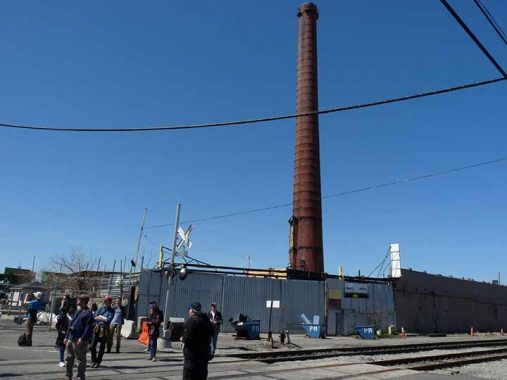
Until 2022, a lone smokestack remained on Railroad Avenue from the Van Iderstine rendering plant , described in this FNY post .
2017 was a transitional year for Creek crossing, as that was the year the first Kosciuszko Bridge was replaced by the first span of the new one. For about a year, new and old stood together. After the original K Bridge , constructed in 1939, was disassembled, the second span , which admitted pedestrian and bicycle traffic, was completed 80 years later. At night, the twin cable-stayed spans put on a light show .

This was originally the main entrance to Calvary Cemetery on Linden Hill Boulevard, but is now pretty much the back door in. In the mid-19th Century Manhattan was getting so crowded (by 1845 the island was fully built up south of about 42nd Street) that it was running out of cemetery space. The two largest cemeteries had been developed by Trinity Cemetery, in the churchyard adjacent to its ancient Broadway and Wall Street location, and uptown in the furthest reaches of civilized Manhattan territory, the wild north of 155th and Broadway.
By the 1840s Brooklyn’s largest cemeteries, Green-Wood and Most Holy Trinity, and Woodlawn in the Bronx were accepting interments; and in Staten Island there was Moravian, developed in the 1760s, and myriads of smaller cemeteries.
Queens, too, had dozens of tiny burial grounds scattered around, many dating to the mid-1600s. In 1847 the Rural Cemetery Act was passed, prohibiting any new burial grounds from being established on the island of Manhattan. Presciently anticipating the legislation, trustees of the old St. Patrick’s Cathedral on Mulberry Street in what is today known as Little Italy began buying up property in western Queens. Calvary Cemetery, named for the hill where Christ was crucified, opened in 1848. The original acreage had been nearly filled by the late 1860s, so additional surrounding acreage was later purchased to the east.
The original Calvary Cemetery lies between the Long Island Expressway (formerly Borden Avenue), Greenpoint Avenue and 37th Street, Review Avenue and Laurel Hill Boulevard. New Calvary, in three divisions, is west of 58th Street (formerly Betts Avenue) from Queens Boulevard south to 55th Avenue. Smaller, pre-existing cemeteries were part of the original acreage, and were then surrounded by Calvary.
My most recent visit within was with Mitch Waxman in November 2022.

This is all that remains of what was once the Haberman LIRR station at 56th Road and 49th Street, formerly known as Debevoise Avenue. According to the late LIRR historian Vincent Seyfried the station originally opened in 1892 and was named for the Haberman Steel Enamel Works in Berlin Village, a name formerly applied to this section of town, which featured a number of German immigrants.
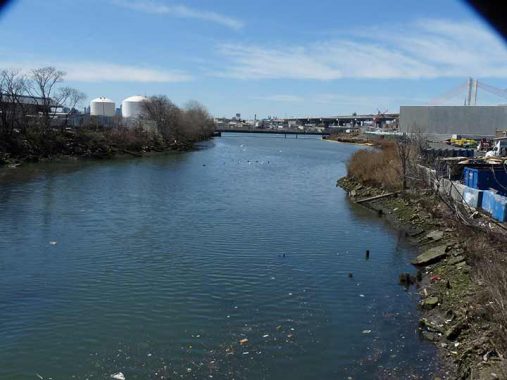
Maspeth Creek, a man-made, or man-straightened, inlet of Newtown Creek can be found in this view from 49th Street south of the tracks.
Here we are standing on the west end of 58th Road, attained from 48th Street, in a no-man’s land (except for the many industrial concerns located here) at the far west of Maspeth, a block north of the ancient Grand Street Bridge, looking across to Brooklyn, where Maspeth Avenue can be seen on the other side.
The pilings and pier remnants are reminders that the Maspeth Plank Road , a connector from the City of Williamsburg(h) to Newtown once spanned the creek, but not since … 1875 , though the bridge can still be found on maps from the early 20th Century. The giant Maspeth gas tanks could once be seen from this vantage, but they were imploded in a controlled explosion in July 2001 — an eerie precursor to events two months later. 58th Road is a remnant of the Maspeth Plank Road, which is represented by Maspeth Avenue (which was redirected several decades ago and no longer follows its former plank-paved route here).
I’m surprised that access to the Creek is so easily attained here; the pathway is rocky and slippery, and one can easily lose footing. However, it’s considered a historic landmark and a descriptive sign has even been installed.
For me one of the crown jewels of the Creek is the Grand Street Bridge , built between 1900 and 1902. While the other Newtown Creek bridges are relatively bland products of the mid-to-late 20th Century and are quite boring in aspect the Grand Street Bridge is a swing bridge that looks like something you would put together with an erector set when you were a kid. It swings and sways when you are crossing it by foot. For years I have heard about the city’s plans to replace it, but here it still stands.
Maspeth Avenue crosses the tracks here at yet another grade crossing.

The Clinton Diner, at 58th Street and Maspeth Avenue, was one of a vanishing breed of roadside diners, catering to workers in an industrial area and motorists who are passing through. It stands next to freight tracks of the Long Island Rail Road. DeWitt Clinton’s mansion, for which the diner had been named, stood nearby until 1933. A house belonging to family members of mid-19th Century Maspeth mover and shaker James Maurice is across the street. Community meetings took place here, and it had been used on numerous occasions for movie and TV shoots when a scene needs authenticity. One of those was the film Goodfellas where a scene with Robert DeNiro and the late Ray Liotta was filmed ; diner owners the Diamantis family renamed the Clinton Diner Goodfellas Diner in its honor. Other TV shows such as the Good Wife , Six Ways to Sunday , the Americans , and Elementary also filmed scenes there. The diner’s location on a main truck route, its isolation, and its 1960s decor made it irresistible to directors searching for period atmosphere.
The fun ended in June 2018 when a devastating fire gutted the diner’s interior. The diner still stands, with plywood instead of windows. After initial indications from the Diamantis family, which owned it, that the diner would reopen, it hasn’t happened. Google Street View shows a blur in its place.
The group had stopped for lunch here and I decided to call it a day and head for the bus in Maspeth. As stated previously I would complete the tour with Mitch later in the month, under ideal weather conditions once again.
Walking along 58th Avenue between 58th Place and 59th Street (in Maspeth the street numbering is all between 55 and 60) I spotted something unusual: what appeared to be an updated and modernized version of the metal medallions honoring members of the Organization of American States along 6th Avenue (the Avenue of the Americas). In 2017, my presumption was that someone living in the area liked the signs and installed a homemade version.
Fast forward to 2023 and came the news that the Department of Transportation was producing new versions of some of the signs and reinstalling them along 6th Avenue . And, a little investigation produced the news that the DOT has a sign shop nearby in Maspeth. Thus, what I saw here was a trial installation of one of the new signs. A check on Google Street View shows it wasn’t on this lamppost for very long at all so it was pure luck stumbling on it that day in April 2017.

At 69th Street and Grand Avenue was waiting the Q18 bus back to the LIRR in Woodside. Rather, I was waiting; they don’t run them very often.
As always, “comment…as you see fit.” I earn a small payment when you click on any ad on the site.
STREETS WITH NO EXPLANATION
Hempstead avenue, queens village.
Kevin, to answer your question about LIRR service to and from Hunterspoint Ave., there are still eleven AM trains (arriving between 6:32 and 9:28 AM) and nine PM trains (departing between 3:30 and 6:53 PM). While it is likely that their ridership numbers have plummeted west of Jamaica because of the new LIRR Grand Central service, the trains will continue to run because (1) they still must travel to Long Island City Yard for storage and servicing between the rush hours; (2) there are some people who use those trains who work in Long Island City; and (3) they originate/terminate at stations beyond electric territory – Port Jefferson, Oyster Bay, and east of Babylon and still must carry riders to/from Jamaica, who connect for Penn, Grand Central, and Brooklyn.
Last time I was there in the AM rush hour, in 2019, there were a number of private vans and small buses waiting for LIRR commuters, who no doubt worked in the surrounding area. The trains are diesels, not electrics, and cannot travel through the tunnels that access the Manhattan terminals.
When the Amazon Headquarters was announced in 2019 it seemed like a perfect match – LIRR trains with excess capacity could bring workers to the proposed location. Unfortunately, the idea was killed along with the jobs it would have created.
You know who is responsible for the cancelation of your “perfect match”. And after Rome (i.e. the Amazon HQ proposal) burned here’s what the diva responsible for this stillbirth was fiddling with:
https://nypost.com/2023/03/05/aoc-begged-to-go-to-met-gala-even-if-it-meant-breaking-the-rules/
In fact, the LIRR diesels are “dual mode” and can convert to electric power for short distances, as the Metro North diesels do when they are south of 125th Street. There are a few arrivals and departures of those dual modes at NY Penn Station, but fewer than to/from Hunters Point or LIC, I believe. The reason those locomotives don’t go to Penn likely has more to do with the convenience of staging them at LIC rather than laying them up in West Side Yard or using them to make a return trip from/to Long Island as a relay without laying up.
The tunnels used for the approach to Grand Central Madison are not large enough to accommodate the diesels and bilevel cars, since it was built to the specs of the electric cars which were similar to the BMT/IND cars.
Half of the LIRR diesel locos are dual mode, and half are conventional and cannot use third rail power. Remember also that dual mode trains in and out of Penn need two locos – one at either end – to prevent gapping on the third rail.
The proposed Amazon headquarters in Queens was not in AOC’s congressional district. It was in Carolyn Maloney’s.
No, I believe it was Mike Ginariis district
The proposed Amazon HQ was in Mike Gianaris’s NY State Senate District. It was in Carolyn Maloney’s US Congressional District at the time. Ocasio-Cortez represented an adjoining District, but has represented that area since the re-districting of 2020. That Amazon pulled out is the result of efforts by both Gianaris and Ocasio-Cortez.
Nice piece Kevin. Do those LIRR freight tracks interconnect with the Bay Ridge Branch?
No not directly
Leave a Comment Cancel Reply
Save my name, email, and website in this browser for the next time I comment.
This site uses Akismet to reduce spam. Learn how your comment data is processed .

- Advertise with FNY
- Contributors
- FNY 2023 Tour Schedule
40-01 Little Neck Parkway 24A Little Neck, NY 11363
@2019 - Forgotten New York. All Right Reserved.

- All Projects
- Emergency Management
- Healthcare/Hospital
- Institutional
- International
- On-Call Contracts
- Parks & Recreational
- Residential
- Transportation
- Wastewater/Treatment
CUNY Medgar Evers College: Lobby Renovation
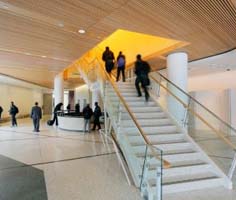
DASNY GOSR Fresh Creek
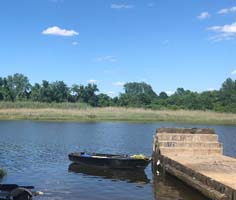
CUNY John Jay Athletic Center
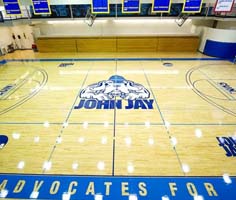
Valley Cottage Fire District: New Fire Station
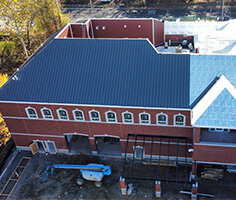
Chelsea Waterside Park Phase II

DDC Newtown Creek Nature Center
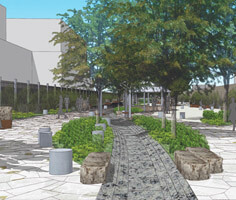
Jacob Javits Convention Center – Transformers

Mount Hope Community
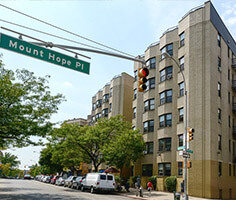
SCA Construction Management Mentorship Program
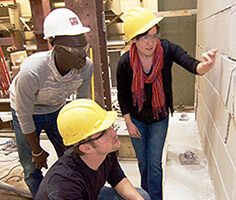
Sheepshead Bay Pier
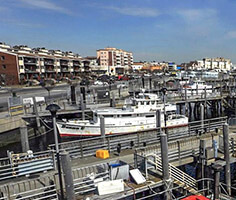
NYC Parks, Idlewild Park Nature Center
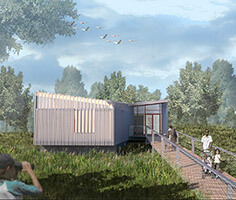
CUNY Schiff House Daycare Center
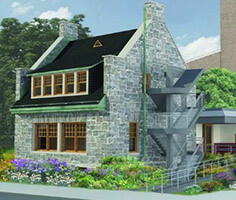
SUNY Purchase College, Big Haus Rehab/Crossroads Rehab

Ellenville Fantine Kill Flood Mitigation
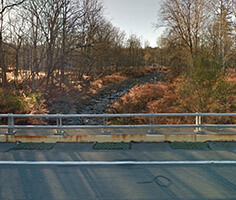
Ellenville Beer Kill Levee
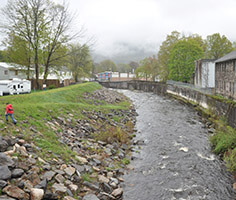
FEMA Island Park Flood Protection

MTA Sandy Mitigation Coney Island Yard
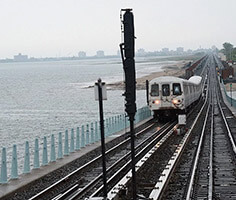
Hurricane Sandy Disaster Assessments
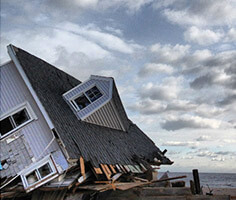
Disaster Preparedness and Recovery Consulting

Putnam Water Treatment Plant
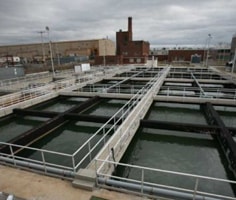
Wards Island Manhattan Psychiatric Center
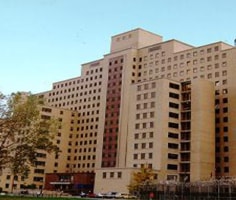
South Beach Psychiatric Center
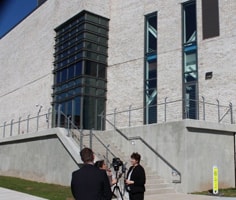
CUNY LaGuardia Community College
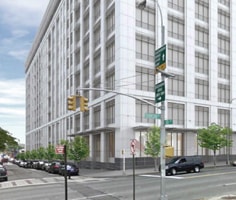
CUNY Queensborough Community College

Nassau County Force Main Installation

La Central Apartment and YMCA

Hudson River Park
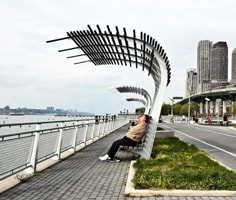
DDC On-Call Estimating

Queens Library
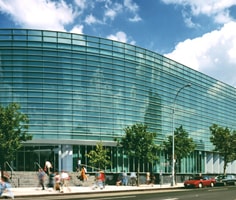

Public School 127K
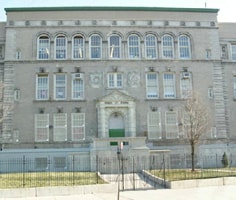
Public School 30
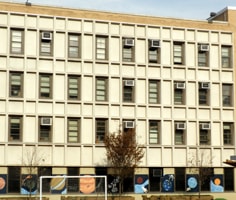
Public School 811
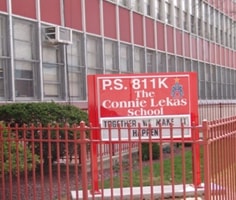
SUNY Stony Brook Computer Science Building
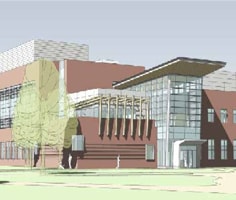
SUNY Stony Brook Kelly Dining Hall
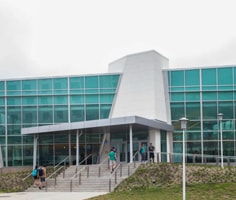
SUNY Downstate Medical Center Boiler Replacement
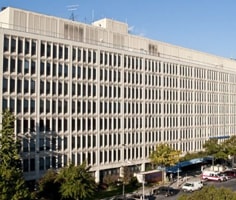
East Ramapo Central School District
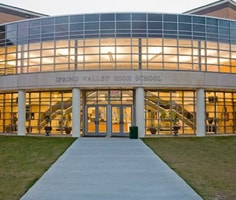
DDC Sandbomb Bomb Squad Building

NYS Police Zone Headquarters
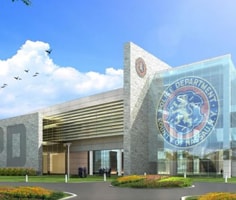
Thurgood Marshall Courthouse
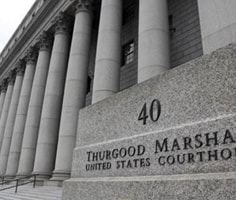
Bronx Family Criminal Courthouse
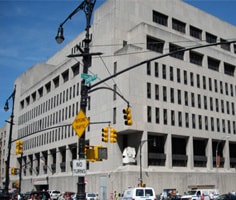
DASNY On – Call Construction Management

NYPA On – Call Scheduling and Estimating

SCA On-call Estimating

NYC Parks Rehabilitation of Comfort Stations
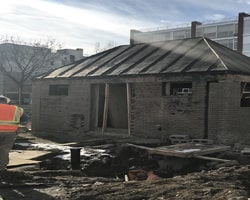
Harlem River Park Greenway

Hempstead Wastewater Pumping Station

Freshkills Park

Tappan Zee Bridge
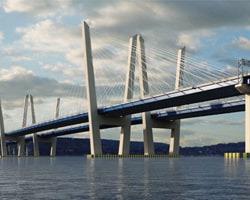
SUNY Albany Dutch Quad
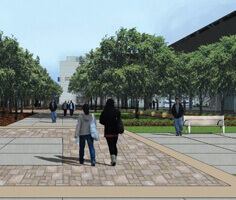
Hudson River Tunnel Replacement (Gateway Project)

MTA 2nd Ave Subway
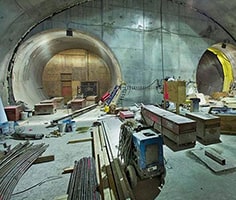
P.S. K811 Connie Lekas School
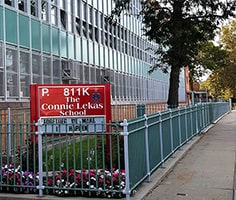
New York Rising Recovery Program
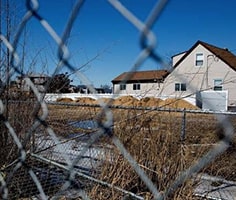
FitFlop Footwear U.S. Headquarters

SUNY Stony Brook Hospital
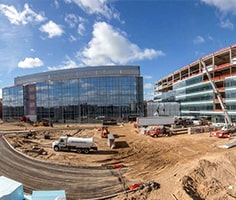
Brookfield Commons Phase II
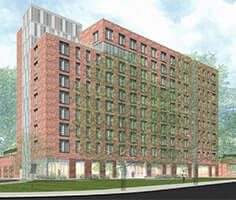
LaGuardia Airport Terminal B Expansion
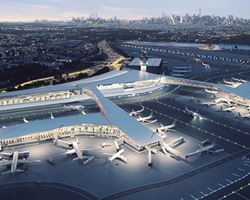
SUNY Purchase College
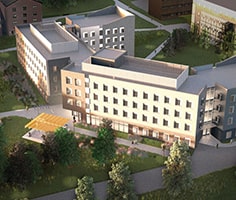
DASNY CUNY Medgar Evers College
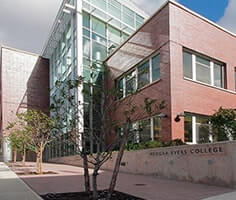
MTA Fulton Street Transit Center New York, NY
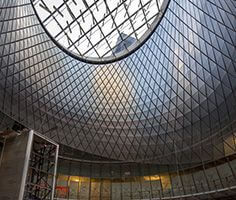
Resorts World Catskills, Sullivan County, NY
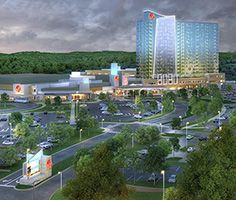
Marriott Times Square Residence Inn New York, NY

40th Precinct Station
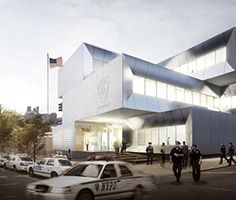
220 Hull Street
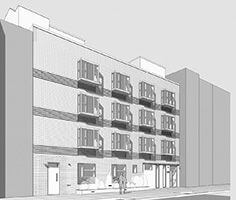
Aquarion Pump Station
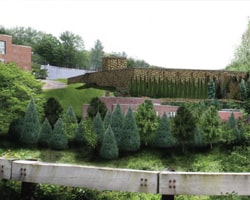
Bronx Mental Health Redevelopment

Camba Gardens II
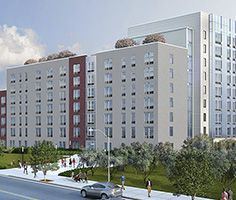
Convent Ave Baptist Church
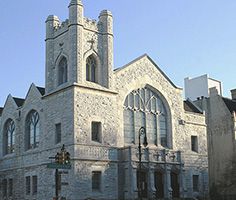
East Ferry Landings
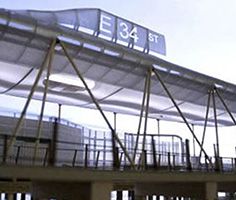
Edgecombe Housing
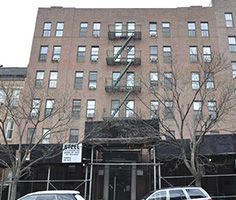
FEMA Hazard Mitigation Program
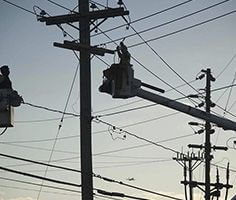
Gouverneur Skilled Nursing Facility
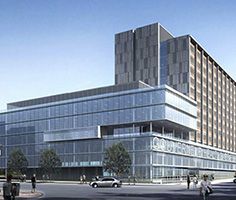
Grace Baptist Cathedral

Grace Plaza Senior Housing
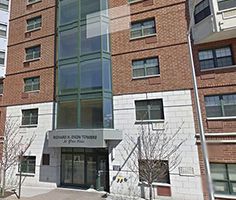
Grace Terrace
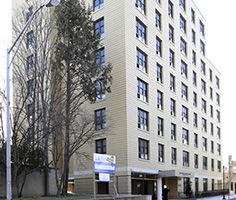
Hegeman Residence
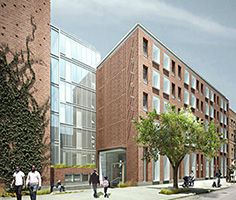
Hospital for Special Surgery
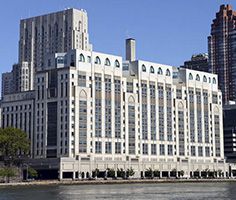
Hurricane Sandy Disaster Assessment
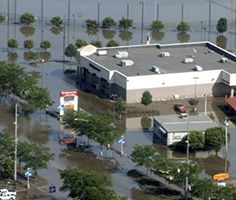
Hyatt Su Casa Cottages Dorado
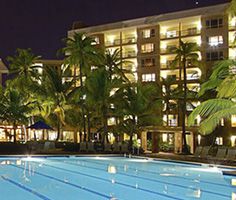
Intrepid Sea Museum Educational Center

Lincoln Fountain Park

Mahopac High School
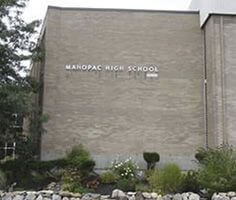
Moscow Airport “Vnukovo”
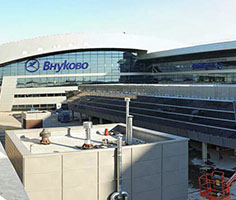
Moscow City Towers
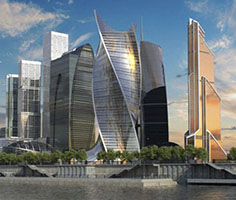
MTA Coney Island Stillwell Station
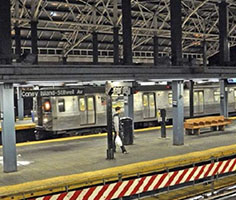
MTA Hugh Carey Tunnel Rehabilitation
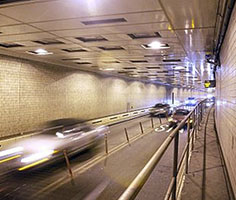
MTA Small Business Mentor Program

New York Power Authority On-Call Scheduling and Estimating
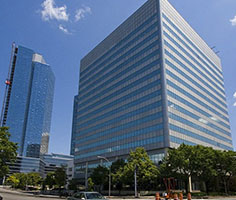
New York University Shimkin Hall
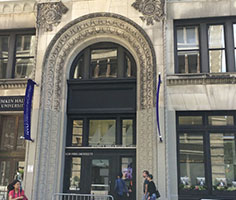
Newark Liberty International Airport
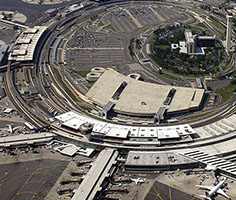
NY Rising Housing Elevation

NYC SBS Training
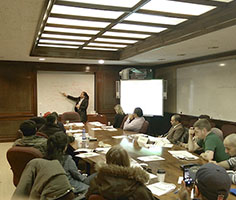
SCA Advanced Mentor Training

Shorehaven Condominium Association

Jacob Javits Convention Center
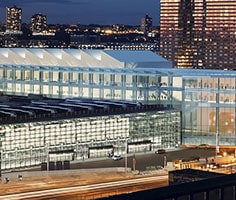
Boston Road Residence
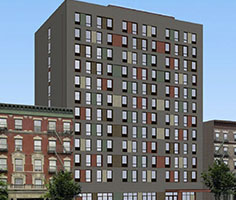
L’Hermitage Plaza, Paris, France
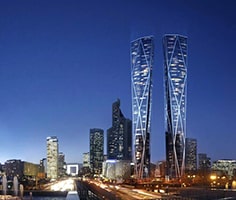
MTA Independent Engineering Services

- Our Mission
- Creek History
- Corporate Volunteer Program
- NCA Nursery + Store
- Newtown Creek Map
- Visit Kingsland Wildflowers
- Enforcement
- RAIN Coalition
- Brownfield Opportunity Area
- Dutch Kills Loop
- Gateway to Greenpoint
- Maspeth Marsh
- Newtown Creek Vision Plan
- North Henry Street
- Bulkhead Habitats
- Intertidal Wetlands Project
- The Living Dock
- Penny Bridge
- Air Quality Monitoring
- Bioremediation
- Creek Speak
- UHI Summer Research Fellowship
- Water Quality Sampling
- Exploring Newtown Creek
- Online Educational Resources
- Request A Field Trip
- Combined Sewer Overflow
- Creek Access
- Greenpoint Oil Spill
- Meeker Ave Plumes
- Public Comments and Advocacy Letters
- USACE HATS Storm Surge Plan
- – Our Mission
- – Creek History
- – Leadership
- – Press
- – Supporters
- – Contact Us
- – Corporate Volunteer Program
- – NCA Nursery + Store
- – Newtown Creek Map
- – Visit Kingsland Wildflowers
- – Enforcement
- – RAIN Coalition
- – Brownfield Opportunity Area
- – Dutch Kills Loop
- – Gateway to Greenpoint
- – Maspeth Marsh
- – Newtown Creek Vision Plan
- – North Henry Street
- – Bulkhead Habitats
- – Intertidal Wetlands Project
- – The Living Dock
- – Penny Bridge
- – Plank Road
- – Air Quality Monitoring
- – Bioremediation
- – Creek Speak
- – Wildlife
- – UHI Summer Research Fellowship
- – Water Quality Sampling
- – Exploring Newtown Creek
- – Curriculum
- – Online Educational Resources
- – Request A Field Trip
- – Aeration
- – Combined Sewer Overflow
- – Creek Access
- – Greenpoint Oil Spill
- – Meeker Ave Plumes
- – Public Comments and Advocacy Letters
- – Superfund
- – USACE HATS Storm Surge Plan
Green Infrastructure
Green infrastructure (GI) utilizes natural systems to absorb and filter stormwater, relying on soil and plant life to remove toxins and recharge ground water supplies. In the built environment, GI systems are critical assets because they soak up stormwater before it gets to the sewer system. They can prevent Combined Sewer Overflow , which releases untreated sewage and street runoff into the Creek and NY Harbor during rain events.
In addition to improving water quality, GI can also provide habitat for wildlife, generate green jobs, save money through reduced capital expenditures on grey infrastructure, conserve energy and combat the urban heat island effect through shade, insulation, and transpiration. Examples of green infrastructure projects include green & blue roofs, raingardens and biosawles, porous sidewalk & road surfaces, rain barrels, down-spout planters and bluebelts.
Expanding and maintaining GI projects is of critical importance to our work to improve the health of the Creek. We advocate for and support city and state-wide GI initiatives and legislation. Our work includes working with Green Infrastructure practitioners and firms on project planning, advising city and state agencies on local opportunities and also community education through public workshops and outreach sessions on why Green Infrastructure matters and how residents can help create more. Below are some NCA projects relating to Green Infrastructure and resources to find out more info.
Rain Gardens:
Rain Gardens, at-grade gardens with depths between 4″-2′, are an excellent low cost GI option. They mimic the natural absorption and pollutant removal activities of a forest, meadow, or a prairie (corresponding with the plant types in the gardens) and can absorb runoff much more efficiently than a standard lawn or tree-pit. As part of the NYC DEP Green Infrastructure program, the City has installed thousands of curbside rain gardens in Brooklyn, and Queens – especially in priority watersheds like Newtown Creek.
In 2021, NCA partnered with Gowanus Canal Conservancy, Bronx River Alliance and the HOPE Program to form the RAIN Coalition: Raingarden Action in Neighborhoods (read the July 21 press release here ). Comprised of three NYC-based watershed organizations and one workforce development organization, we seek to build green job opportunities and address the climate crisis through maintenance of Right-of-Way Rain Garden maintenance. As part of this work NCA manages 15 Rain Gardens in Brooklyn and Queens on a weekly basis to conduct weekly maintenance reviews at each site, documenting and tracking plant health and identifying illegal dumping issues. Learn more about the RAIN Coalition here .
Green Roofs:
Kingsland Wildflowers green roof: NCA has partnered with NYCAudubon, Broadway Stages and Alive Structures to build out a 24,000 sq foot green roof at 520 Kingsland Avenue in Greenpoint. The project features native wildflowers and grasses that not only soak up rainwater, but provide habitat to pollinator and bird populations. Additionally, the roof serves as outdoor classroom for local schools and the general public. Visit the project website here for more info and stay posted to our events for upcoming activities at Kingsland Wildflowers.
Industrial Green Roof advocacy: With funding from the New York State Pollution Prevention Institute, NCA conducted thorough research into the land use, policy and economic factors of green roof implementation within industrial areas. Learn more about the project. We have also partnered with property owners within the IBZ and green roof design-build firms Alive Structures and Highview Creations to support them through the green roof retrofitting process. If you’re a property owner or manager looking for support in your NYCDEP Green Roof Grant application, or otherwise need guidance on green roofs please reach out to us!

IMAGES
COMMENTS
The Visitor Center is open for education programs by appointment only. If you would like to learn about public tours, please visit the Digester Egg Tour webpage.. Located at the Newtown Creek Wastewater Resource Recovery Facility in Greenpoint, Brooklyn, the Visitor Center at Newtown Creek is the only facility within the five boroughs where you can experience New York City's water ...
Location. The Digester Egg Tour starts at the Visitor Center at Newtown Creek, located in Brooklyn's Greenpoint neighborhood. We are easy to spot—just look for the bright orange building. The entrance is near the intersection of Greenpoint Avenue and Humboldt Street at 329 Greenpoint Avenue Brooklyn, NY 11222.
The Newtown Creek Alliance is a community-based organization dedicated to protecting the environmental, recreational and commercial integrity of Newtown Creek. Follow Us; viagra 100mg england; ... A standard tour can accommodate up to 30 participants for a 90 min to 2 hour visit, with the ability to host larger groups for longer periods of time ...
The Newtown Creek Alliance is a community-based organization dedicated to protecting the environmental, recreational and commercial integrity of Newtown Creek. Follow Us; Events; ... Last week we had the pleasure of hosting @the_hope_program for an educational tour and hands on work day, helping to maintain the meadows on Kingsland Wildflowers.
Low Cost Newtown Creek Boat Boat Tours for the Public. When: Sunday, October 23rd, 10:00am - 12:00pm & 1:00pm - 3:00pm. Where: TBD. Cost: $10/person [ Tickets] There will be two Newtown Creek boat tours on October 23rd. The first is from 10:00am - 12:00pm and the second from 1:00pm - 3:00pm. Come aboard for an intense Newtown Creek ...
Description. Join DEP Educators for an outdoor guided tour of the Newtown Creek Nature Walk. Guided tours are 90 minutes and feature different points of interest and hands-on activities throughout the half-mile Nature Walk. DEP Educators will tailor your field trip experience to the grade/age of your students and classroom curriculum standards.
On an early Tuesday morning, I ventured off to Greenpoint, Brooklyn to tour NYC's largest and newest plant, the Newtown Creek Wastewater Treatment Plant.. One day of each month, they host a tour ...
Join Alicia West, the Department of Environmental Protection's Director of Public Design Outreach, on an architecturally focused virtual tour of New York Cit...
April 4, 2024 By Queens Post News Team Hunter's Point Parks Conservancy and the Newtown Creek Alliance are hosting educational field trips at the newly-opened Queens Landing Boathouse and ...
The Newtown Creek Nature Walk, located in Greenpoint, Brooklyn, is a public esplanade that wraps the waterfront edge of the city's largest wastewater resource recovery facility.Artist George ...
A Field Guide to Whale Creek is an audio walking tour and printed field guide to part of Newtown Creek, New York City's most polluted waterway. A Field Guide to Whale Creek situates the participant between the industrial and the "natural" at the Newtown Creek Nature Walk in Greenpoint, designed by George Trakas.
Newtown Creek is the largest of the city's wastewater treatment plants, processing 310 million gallons every day. That accounts for Brooklyn's wastewater as well as 1/5 of Manhattan's flow and 1/7 of Queens'. When it rains, the Plant takes on more than twice that flow, contending with 750 million gallons daily.
Creek Access. NCA is a tireless advocate for increased access to Newtown Creek. With 11 miles of shoreline, Newtown Creek has limited places where local neighbors and employees can safely get to, let alone see the waterway. In addition to connecting the community with the Creek and providing public space, access points can provide additionally ...
Newtown Creek handles 310-million gallons of wastewater from about 1.1-million New Yorkers daily, nestling its environmentally conscious industrial space into Brooklyn's Greenpoint neighborhood ...
ONE day, Mr. Waxman signed up for a boat tour narrated by Bernard Ente, a maritime devotee from Maspeth. They hit it off, and Mr. Ente, a founding member of the Newtown Creek Alliance, became a ...
Newtown Creek, a naturally-formed inlet of the East River, was one of the northeast's first superhighways, in use by Native Americans for untold centuries. ... In the April 2017, Mitch, a member of the Newtown Creek Alliance, conducted one of his Newtown Creek tours. It was an all-day affair comprising approximately 8 hours with over ten miles ...
Walking tour around Moscow-City.Thanks for watching!MY GEAR THAT I USEMinimalist Handheld SetupiPhone 11 128GB https://amzn.to/3zfqbboMic for Street https://...
Urban Waterways and Green Infrastructure Tour. Grades: 4th - Adult, Capacity: 30 Students. Program Description. The tour will start at Kingsland Wildflowers Green Roof where we introduce Newtown Creek past, present and future, touching on the importance of green infrastructure, stormwater management, and creating native habitat.
🎧 Wear headphones for the best experience.In this video, we will walk along the famous tourist routes of Moscow, take a walk along the renovated embankments...
369 Lexington Avenue, 3rd Floor, New York, NY 10017. 90 State Street, suite 700, Albany, NY 12207. DACK Newsletter
#Nikolskayastreet #Russia #MoscowcityMoscow city Russia is the biggest in Europe . So on this walking tour video we will be walking from the GUM department s...
Examples of green infrastructure projects include green & blue roofs, raingardens and biosawles, porous sidewalk & road surfaces, rain barrels, down-spout planters and bluebelts. Expanding and maintaining GI projects is of critical importance to our work to improve the health of the Creek. We advocate for and support city and state-wide GI ...